
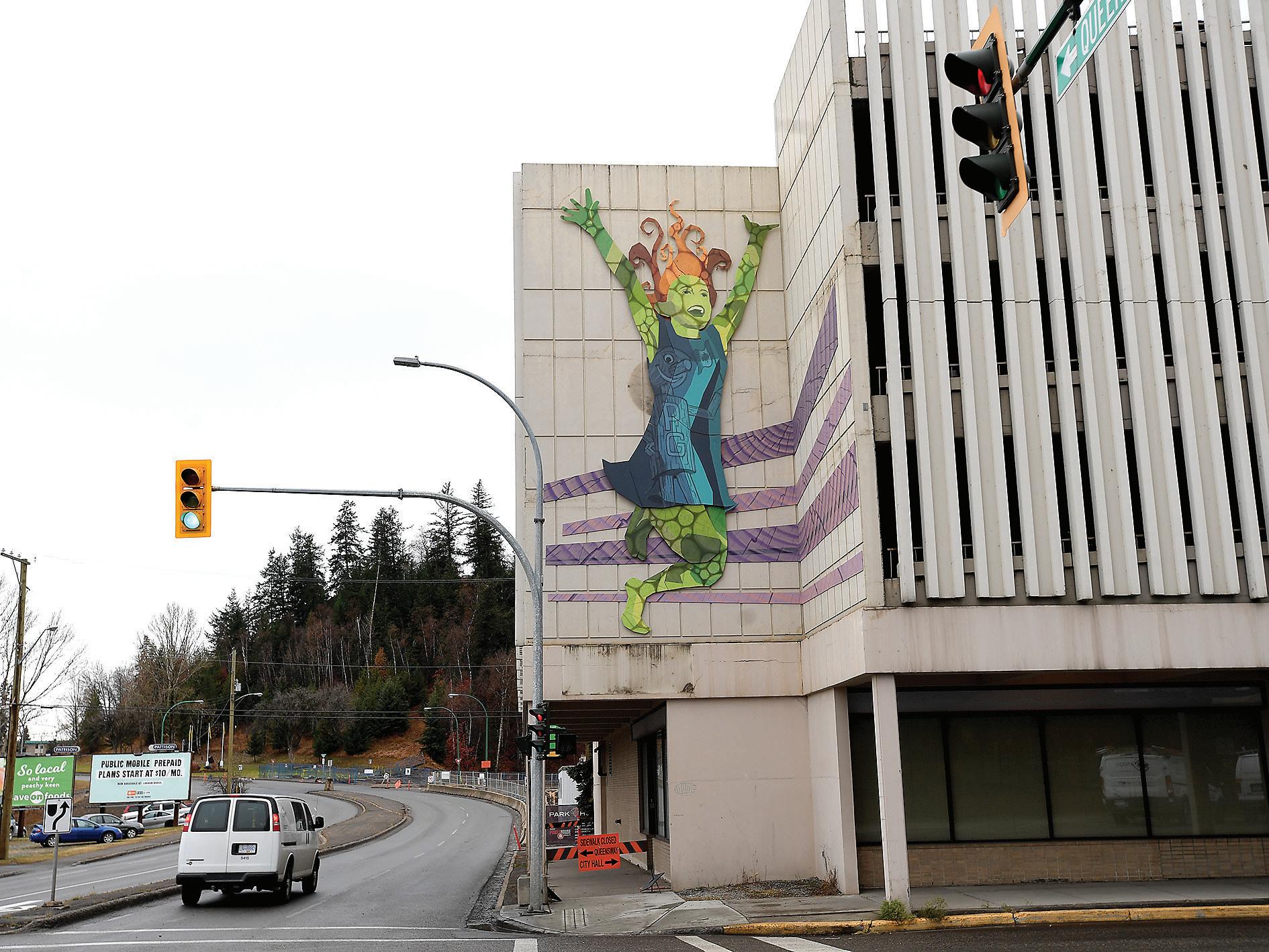



Citizen staff
Repairs have been completed on the section of pipeline at the centre of the massive explosion earlier this month, the structure’s owner, Enbridge, said Wednesday.
The company expects to begin returning the segment of the 36inch pipeline to service within 48 hours.
“As part of this multi-hour process, we will gradually increase flows of natural gas through the repaired segment until it reaches 80 per cent of its normal operating pressure,” Enbridge said.
A giant fireball shot up into the air to the city’s northeast and forced a widespread evacuation on the evening of Oct. 9 when the pipeline, part of Enbridge’s TSouth system, suffered a rupture.
A smaller, 30-inch pipeline running next to it has been operating at 80 per cent capacity since Oct. 11.

“As part of our ongoing commitment to safety, we are conducting a comprehensive dig program at select locations along the T-South system,” the company said.
“This work will help further validate the integrity of the entire system, prior to returning both the 30-inch and 36-inch pipelines to
Mark NIELSEN Citizen staff
full operating capacity.
“Until we are fully satisfied it is safe to operate the lines at full capacity, and subject to regulatory review, both pipelines will con-
UNBC grad student identified as defendant in Galloway lawsuit

A UNBC graduate student has been identified as one of more than 20 people against whom author Steven Galloway has filed a lawsuit alleging defamation.
According to a notice of civil claim filed Friday in B.C. Supreme Court in Vancouver, in July this year, Wendel Schwab allegedly posted on Twitter: “In my
tinue to safely operate at reduced pressures.”
The cause of the explosion remains under investigation by the Transportation Safety Board.
opinion, Steven Galloway sexually assaults women … in my opinion, Steven Galloway is what I would consider human garbage.”
Schwab is among 19 of the 25 named in the lawsuit for whom their occupations and addresses are currently unknown to the plaintiff. However, National Post columnist Christie Blatchford says he is a student at UNBC.
see SCHWAB, page 3
Frank PEEBLES Citizen staff fpeebles@pgcitizen.ca
Reports have leaked out of Kingston, Ont., that indicate that city has already been confirmed as the host of the 2020 Tim Hortons Brier.
The Kingston Whig-Standard newspaper is reporting that Curling Canada is holding an announcement in Kingston this morning.
“I don’t think Curling Canada would be having a major announcement in Kingston to announce we didn’t win the Brier bid,” Ken Thompson, the head of the Kingston Brier bid, told the newspaper. Prince George officials will nevertheless assemble at 9:30 a.m. today to discuss next steps – be that a celebration and kickoff of hosting duties or to consider bidding again for a future Brier.
The Tim Hortons Brier is the Canadian men’s curling championship. Prince George has hosted the Scotties Tournament of Hearts, the women’s national curling championship, twice before (1983 and 2000), plus the 2009 pre-Olympic men’s/ women’s Road to the Roar tournament, but has never hosted the Brier.
Prince George advanced to the finals in the Tim Hortons Brier 2020 selection process and was on the shortlist with Kingston, Moncton and St. Catharines.
The fiscal impact of hosting a Brier is estimated at $11 million to $15 million injected into the local economy of whichever city wins the bid.
Mark NIELSEN Citizen staff
A Williams Lake man was sentenced Wednesday to a further three years and two months in prison for a drug-fueled sexual assault of a fellow forest fire evacuee while the two were in a Prince George motel room this past summer.
In all, David Richard Morin, 24, was sentenced to five years in custody but received credit of nearly 23 months for time served prior to sentencing. In March, Morin was found guilty of assault, assault causing bodily harm, uttering threats to cause death or bodily harm and unlawful confinement in relation to the incident over the night of July 28, 2017. Morin and the victim had been boyfriend and girlfriend in Williams Lake.
see MORIN, page 3




LEFT: Robert Park , an international CNC student from South Korea, carves his pumkin Wednesday morning during the annual CNC pumpkin carving contest in the Gathering Place. ABOVE: Harsh Badhan, left, has his face painted into a zombie Wednesday by Navsher Singh Sandhu for the CNC Students Union “zombie walk” from CNC to Pine Centre to push the provincial government to completely eliminate interest on student loans.



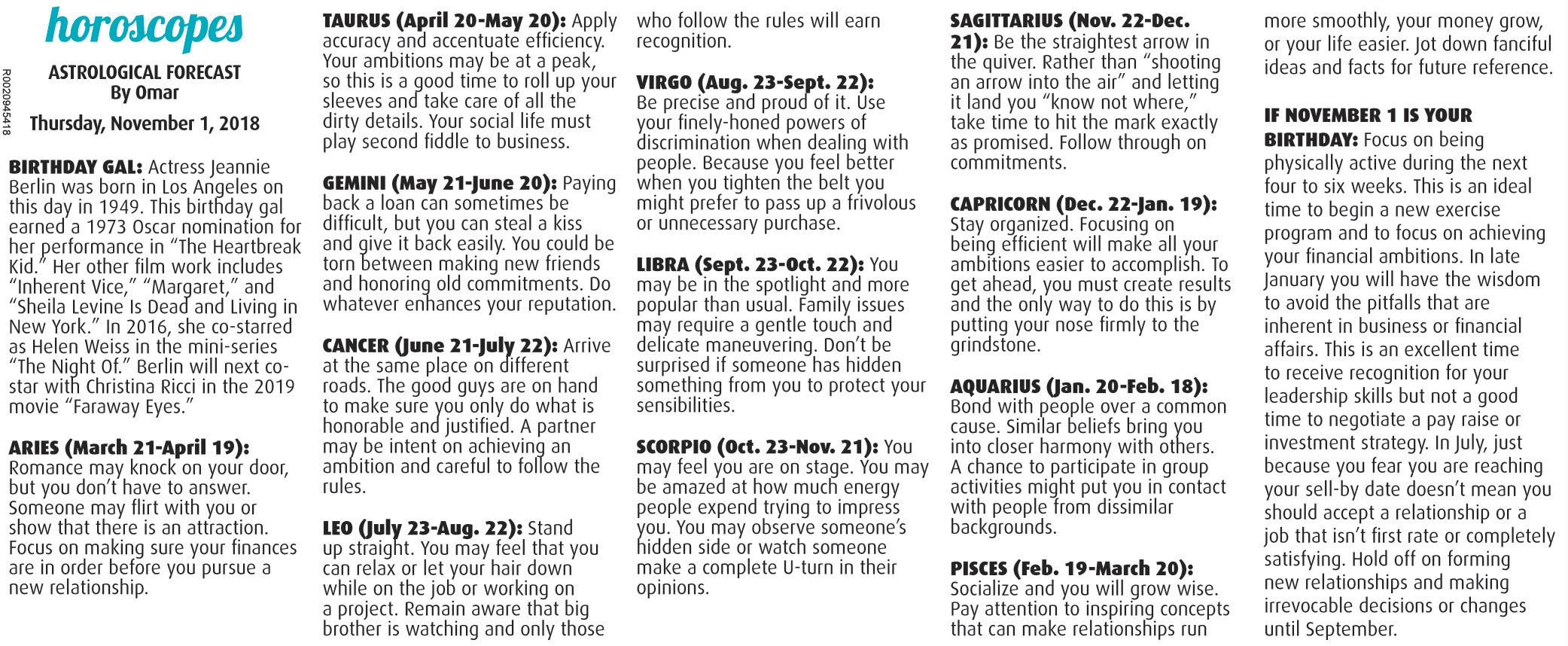
from page 1
Morin had been evacuated to Prince George two weeks before she had arrived and when she showed up, she learned he had been seeing another woman in this city, according B.C. Supreme Court Justice George Macintosh’s review of testimony from a trial on the matter.
She booked the motel room and invited Morin over in the hope he would make up with her. But Morin was addicted to methamphetamine and had been smoking eight or nine times a day while in Prince George. High on the drug, he and a friend showed up at the motel room where they smoked more meth. When Morin and the friend refused to go outside to smoke, she went into the bathroom and started crying. Morin, who admitted to becoming agitated and confused while on the drug, started hitting her and then ordered the friend to leave. The friend complied and, according to the woman’s testimony, Morin continued to hit her and then prevented her from escaping. He took away her cellphone and purse then smoked some more meth before apologizing to her.
Told she did not believe him, Morin lost his temper again and started choking her. He eventually relented and the woman was able to resume breathing while a bruise was left on her throat.
Morin then grabbed a hatchet and paced back and forth in the room while she laid curled up on the bed, wanting to escape but terrified of her attacker.
Morin claimed the sex that followed was consensual, but Macintosh found otherwise. He said Morin’s account was “unbelievable as seen in the context of that night,” noting Morin repeatedly slapped, punched and hit the woman, had threatened her with the hatchet and blocked her from leaving. “Consensual sex would be almost a physical and psychological impossibility,” Macintosh said in reaching the guilty verdicts. Sentencing was delayed so a pre-sentence report could be completed.
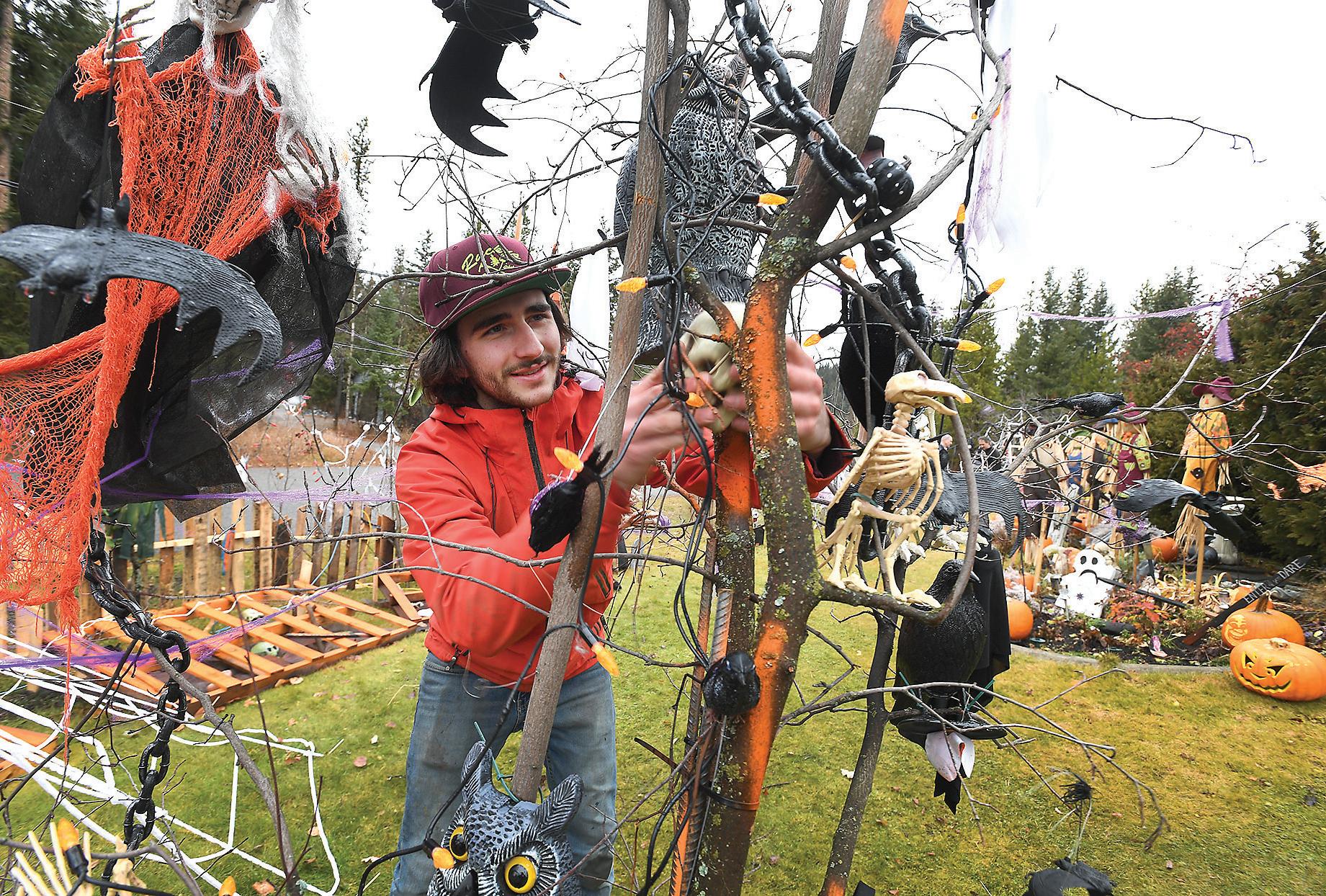
Frank PEEBLES Citizen staff fpeebles@pgcitizen.ca
Kids are having sugar highs all over the city, this morning after all their trick-or-treat booty.
The Coletti family is enjoying a high of another kind, but just as linked to last night’s frivolities.
Each year for the past dozen or so, the Colettis have decorated their house in Halloween finery. As the years went by, the ambition and the decor compounded. Led by son Spencer, 19, it has become an epic undertaking. He even moved back from Whitehorse when his seasonal work ended so he could take on the family tradition once again.
“I’m still working two full-time jobs,” said Spencer. “I don’t live too far away, it’s pretty quick to come here every day and get to work on it. We’ve been up till 1 in morning working
from page 1
Galloway’s lawyer, Dan Burnett, said in an email to the Citizen that he “can’t confirm 100 per cent but I do have a UNBC email which I am told is his.”
Schwab’s Twitter account is protected although a search on Google shows he has made several posts on the account. None referring to Galloway show up in that search.
According to a posting on the UNBC website, Schwab completed a Bachelor of Arts in English in 2016 at the university and is in his first year of graduate studies in the UNBC English department. He is also vice president of the Northern British Columbia Graduate Student Society and has sat on the UNBC Board of Governors and Senate as an undergraduate, according to the posting. Schwab has not returned a request for comment, made via email. None of the allegations have been proven in court and none of the defendants have yet filed a response to the claim.
In November 2015, Galloway was suspended from his position as chair of the University of British Columbia’s creative writing program while an investigation was completed into what the school said were serious allegations of misconduct.
A month later, the university asked a former B.C. Supreme Court judge to investigate complaints against Galloway. In April 2016, Mary Ellen Boyd submitted her report and Galloway was fired that June. Boyd’s report has never been made public but the claim states she concluded allegations of rape, sexual assault and assault were unsubstantiated, “... and this finding became known to all defendants herein by the fall of 2016, but they nevertheless continued and persisted in repeating false claims that the plaintiff was guilty of rape and sexual assault, as set forth herein.”
As a consequence, it says Galloway “continues to suffer grave damage to his reputation, upset and emotional damage, as well as special damages including the destruction of his career, all to be particularlized at trial.”
On Schwab’s alleged posting,
the claim says Schwab “meant and understood, in both its literal and natural meanings, to mean the plaintiff has committed sexual assault upon multiple women.”
A labour arbitration decision later ordered the university to pay Galloway $167,000 in damages for statements the school made during the process that violated his privacy rights and harmed his reputation.
However, the faculty association withdrew its claim to have Galloway reinstated to his post without giving details.
The issue of whether the university had cause to dismiss the professor was no longer contested.
The claim says he had a consensual romantic affair that lasted two years with one of the defendants. The Canadian Press does not identify those who allege they have been sexually assaulted without their consent.
The statement says both were married and their affair was adulterous. It asserts that the woman made the false allegations to “deflect blame and create a false narrative to portray herself as innocent in the affair.”
— with files from CP
on it, but we used to go at it even harder, so it feels a lot better than 3 or 4 a.m. like it used to be.”
It’s cold at night, but not like some Halloweens past.
“A couple of years it got seriously cold, like unbelievable, and a couple of times it all got snowed on really bad,” said Spencer. “Things got all wet and it took a long time drying it out inside when we had to put it all away.”
His parents, Doug and Carol Anne, have devoted the furnace room and some other nooks and crannies to the Halloween decorations (they do a fair job of decorating for Christmas as well). People will drop by throughout the year to give them new material. Sometimes anonymous donations end up on their doorstep. They also add some key purchases each new Halloween. Some of them involve technology but most of their decorations are good ol’ fashioned tactile items.
“Dad carved the Shrek one and I did all
the rest,” said 11-year-old Corbyn, Spencer’s brother who is gleefully walking in his big bro’s Halloween footsteps. “I thought it would be fun to carve scary faces into each one. Makes sense,” naming off each horror movie character depicted in the orange orbs.
“It’s cool seeing all the reactions of people, seeing how many people stop and stare, and my friends like to come by to look at it,” Corbyn said. He goes out trick-or-treating himself, but Spencer stays behind to monitor the crowds who come by their home in the North Nechako neighbourhood. He and the family worked up to Halloween night for about three weeks, and Spencer could hardly stop to talk on Halloween afternoon. “I’ve got lots more to do, right to the bitter end,” he said.
The decorations do not get packed up immediately after the big event. Anyone wanting to see the Coletti spooktacular can still roll past 3574 Riverview Rd.

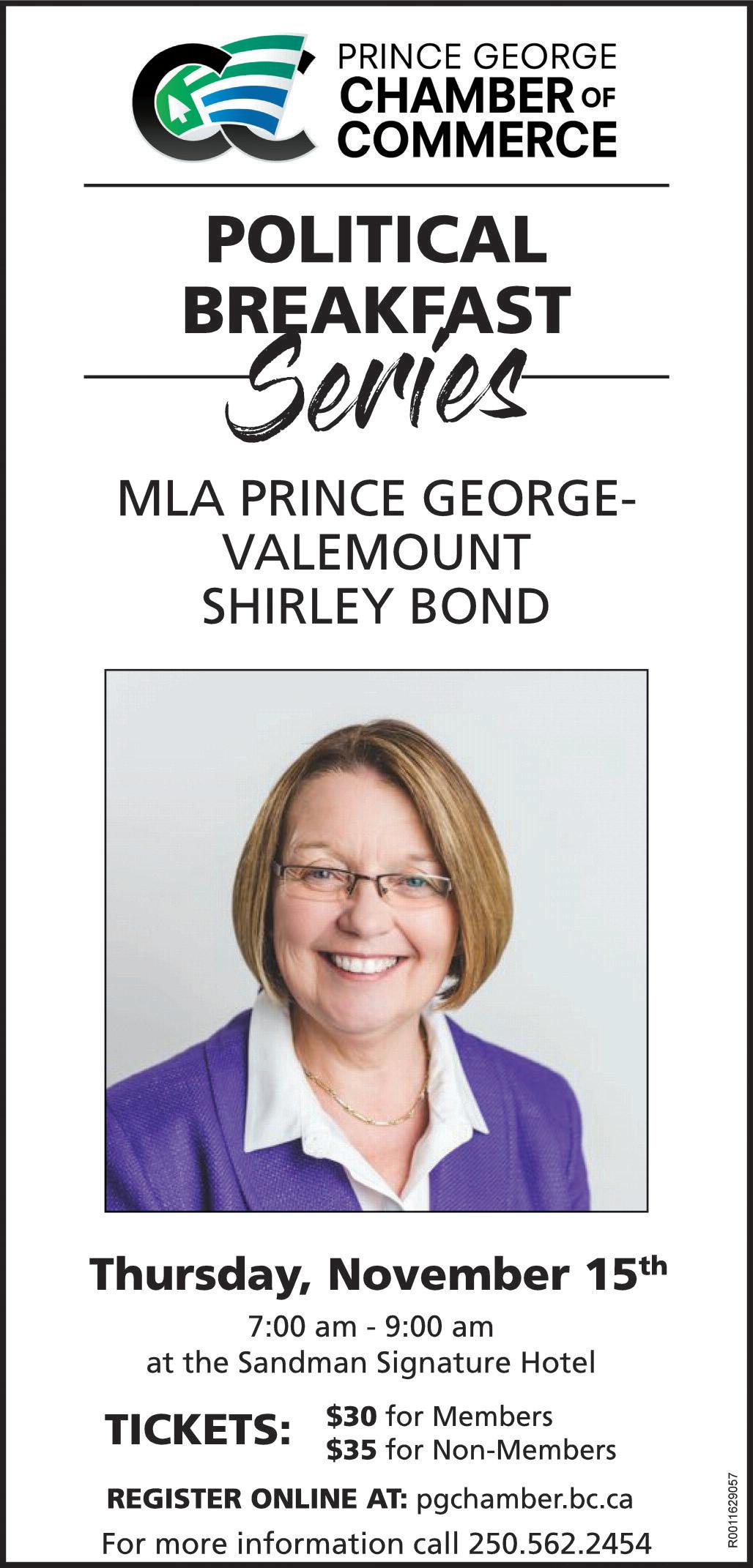
Over the past several months I have read and listened to countless opinions from the proponents for and against proportional representation but not once have I seen anyone comment on whether proportional representation is a form of electoral process permitted under Canada’s Constitution.
The Charter of Rights and Freedoms is entrenched in the Constitution Act 1982. Section 3 of the Charter states “every citizen of Canada has the right to vote an election of members of the House of Commons or of a legislative assembly and to be qualified for membership therein.” It does not say political parties get to decide who will sit in the legislature.
The first in-depth analysis of Section 3 took place in British Columbia in a 1989 B.C. Court of Appeal decision on whether the Charter applied to electoral boundaries established under the British Columbia Constitution Act. For those who may not remember, B.C. had a hodge-podge arrangement of dual member ridings mixed with single member ridings and electoral populations that deviated by 70 percent or more. The court determined sections of the B.C. Constitution Act pertaining to electoral boundaries were unconstitutional.
The direction from the court resulted in
the creation of the British Columbia Boundaries Commission Act and the regular adjustment of electoral boundaries to ensure that equality of voting power was protected. The court directed the province to ensure that representation by population was a key determinant, allowing the province a plus or minus 25 per cent variance based on supportable regional and geographic differences.
The court, in that 1989 decision, recognized ten core values that collectively, guarantee our right to vote under Section 3.
1. The right not to be denied the franchise on the grounds of race, sex, educational qualification or other unjustifiable criteria;
2. The right to be presented with a choice of candidates;
3. The right to a secret ballot;
4. The right to have one’s vote counted;
5. The right to have one’s vote count for the same as other valid votes cast in a district;
6. The right to sufficient information about public policies to permit an informed decision;
7. The right to be represented by a candidate with at least a plurality of votes in a district;
8. The right to vote in periodic elections;
9. The right to cast one’s vote in an electoral system which has not been “gerrymandered” – that is, deliberately engineered as
to favour one political party over another;
10. The right to equality of voting power – representation by population is one of the most fundamental democratic guarantees and the notion of equality of voting power is fundamental to representation by population.
In his report How We Vote, David Eby states “no political party would be eligible to receive seats through a system’s proportional allocation method unless the party received at least five per cent of the overall vote in the province or region.” How does this reflect the core values stated above? It contradicts the right to have one’s vote count, the right to have one’s vote count for the same as other valid votes cast in a district, and the right to be represented by a candidate with at least a plurality of votes in a district.
How about the right to cast one’s vote in an electoral system which has not been “gerrymandered?” From the beginning, this entire process has been gerrymandered beginning with the “not so neutral” arbiter attorney general, the very biased public consultation process, the flawed process of the Referendum Act 2018 with no regional or voter thresholds, the lack of information available to voters to make an informed decision (the right to sufficient information about public policies to make an informed decision) and a campaign period inter-

The most important thing about voting for or against proportional representation is written on page eight of the B.C. Voter’s Guide for the 2018 Referendum on Electoral Reform.
The guide details possible options for possible PR systems for B.C. Election packages for each voter though should arrive no later than Nov. 4.
If you don’t have a guide yet, find a Service BC Centre or call Elections BC at 1-800-661-8683. Like anything new, it takes a little work to understand how the options for proportional representation work. Take the time. Study them. Decide what you think. Then vote. As voters, that’s our job.
But, the last bullet on page eight of the guide reads: “... another referendum will be held after two general elections to see if B.C. wants to keep the new voting system or go back to using
First Past the Post.”
All over the world there seems to be a fast-moving push toward splitting people into good and bad, right and wrong, right and left, liberalism and populism and even worse.
Whoever gets to decide what proportional representation could look like in B.C. and whatever form it takes, we, the citizens of B.C., get to judge the outcome and turf it if we think it doesn’t work. PR only becomes permanent if we think it works for us.
Let’s give this effort a two government chance to prove itself worthy or not. That’s democracy.
Jan Manning
Prince George
This is just a response to some of your articles on U.S. President Donald Trump. There are 140 fewer White House staff under Trump than under Obama resulting in a savings of $25.1 million. There were 44 staffers whose
sole purpose was to look after Michelle Obama’s needs (or wants) there are only five dedicated to Melania Trump.
Trump donated his total salary to the Department of the Interior to be used to repair military cemeteries.
What did Barack Obama do with his?
Trump was elected to serve his country and his people and not everyone else’s.
Justin Trudeau was elected for the same reason but he is too busy taking pictures of himself and cavorting with semi nude gay parade people.
The fact that none of this was reported in any of the news media, including yours, simply shows your bias and not your reporting abilities.
You were too busy printing vitriol by people like your guest columnist.
Why don’t you find and print your own news instead of just copying everyone else’s?
Wally Neufeld
Prince George
LETTERS WELCOME: The Prince George Citizen welcomes letters to the editor from our readers. Submissions should be sent by email to: letters@pgcitizen.ca. No attachments, please. They can also be faxed to 250-960-2766, or mailed to 201-1777 Third Ave., Prince George, B.C. V2L 3G7. Maximum length is 750 words and writers are limited to one submission every week. We will edit letters only to ensure clarity, good taste, for legal reasons, and occasionally for length. Although we will not include your address and telephone number in the paper, we need both for verification purposes. Unsigned or handwritten letters will not be published. The Prince George Citizen is a member of the National Newsmedia Council, which is an independent organization established to deal with acceptable journalistic practices and ethical behaviour. If you have concerns about editorial content, please contact Neil Godbout (ngodbout@pgcitizen. ca or 250-960-2759). If you are not satisfied with the response and wish to file a formal complaint, visit the web site at mediacouncil.ca or call toll-free 1-844-877-1163 for additional information.
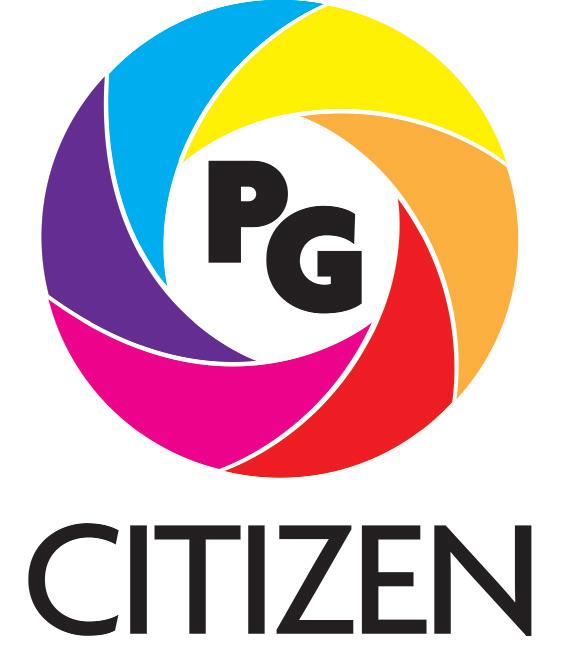


Mailing address: 201-1777 Third Ave. Prince George, B.C. V2L 3G7
Office hours: 9:00 a.m. to 5:00 p.m., Monday to Friday
General switchboard:
250-562-2441 info@pgcitizen.ca
General news: news@pgcitizen.ca
Sports inquiries: 250-960-2764 sports@pgcitizen.ca
Classifieds advertising: 250-562-6666 cls@pgcitizen.ca
twined with a municipal election campaign to confuse voters and take advantage of voter fatigue.
Since Madam McLachlin’s decision in 1989, the Supreme Court of Canada has reinforced the importance of equality of voting power. Much emphasis has been placed on establishing electoral boundaries that provide this equality.
How do you explain to the voters in a district that the MLA who received a plurality of votes is not eligible to take their seat in the legislature because some mathematical formula declares their party did not receive the right proportion of the popular vote?
To David Eby and John Horgan – why have you put your own political goals ahead of the Charter rights of the citizens of this province?
I’ll conclude by quoting Madam McLachlin: “If in giving substance to this right to vote, the Court interprets s.3 as granting to citizens the right to a certain degree of proportionate representation, then legislation efforts must be measured against this standard and if they fall short, be declared unconstitutional,”
— Mike Morris is the B.C. Liberal MLA for Prince George. A retired RCMP superintendent, Morris was the solicitor general and minister of public safety in the previous government under Premier Christy Clark.
I’d always shuddered to imag-
ine what it would be like to live as a dissident under some autocratic regime, hunted and harried as an “enemy of the people.” And now I suppose I’m getting a slight taste of it, since President Donald Trump on Monday tweeted that the “Fake News (Media) is the Enemy of the People.”
Some journalists are greatly alarmed, but I just can’t muster much fear of persecution. The president struggles to control a handful of his senior staff; strongarming the vast federal bureaucracy into carrying out any purges he fancies looks entirely beyond his capacities. And yet it’s still worrisome that the commander in chief seems to enjoy dictator cosplay. The job of U.S. president ought to offer enough drama and pageantry to satisfy anyone. Trump should have neither the time nor the need to spend afternoons dressing up as Dear Leader and strutting through our Twitter feeds.
Still more worrying are his supporters’ often pleased reactions to these sorts of attacks. I don’t really expect any better from Donald Trump. But I retain rather higher hopes for conservatives.
His supporters might respond that he is justified: that the media has a liberal bias and that the skew has become more monolithic, and less restrained in its expression, since Trump’s election. Most media outlets do indeed list to the left, and they’re certainly not overfond of Trump. But I’d ask my conservative friends whether dubbing them enemies of the people is really the best way to go about correcting that problem. Or even the best way to name it.
I’ve written more than my share on media bias, but I’ve managed to avoid defaming a huge profession, with tens of thousands of individuals, as a massive fifth column. And I’ve definitely avoided deploying “enemies of the people,” which has a particularly grotesque history.
In the Soviet Union under Vladimir Lenin, the designation “enemy of the people” justified gross crimes against people who’d had the temerity to, say, own a bit of property under the old regime. Stalin, not to be outdone, widened the meaning to include fellow communists who displeased him in some way. The carnage was so appalling that even Nikita Khrushchev repudiated the phrase in 1956, saying it had been “specifically introduced for the purpose of physically annihilating such individuals.”
Oh, and did I mention that Nazi Germany also wielded “enemy of the people” as a cudgel? Hardly a good look for the president of the United States. This is where conservative readers will be getting angry. “There you go again! You mainstream media types are always calling us Nazis! Such nonsense!”
As it happens, I agree: It is nonsense to argue this way, and the left-wing folks who do it ought to knock it off.
Trump’s rhetoric about immigrants and others appalls me. But that’s not in the same category as establishing a fascist dictatorship. Nor is tightening our immigration policy very much like invading other countries and sending millions of citizens to extermination camps. It’s offensive lunacy to suggest that these things are somehow inextricably linked. And it’s not much more reasonable to claim a direct causal link between Trump’s rhetoric and the monstrous synagogue shooting in Pittsburgh, as is now happening. Jews are not among the groups Trump is known for slandering, and America has a pernicious history of anti-Semitic violence long pre-dating Trump. Sadly, there were deadly attacks at Jewish centers under both Presidents George W. Bush and Barack Obama.
So, no, friends, I’m not arguing that Trump is Hitler, or even Hitler Lite. I’m confident that even if he wanted to trash the Constitution and impose a racist dictatorship, neither the institutions of the United States nor the people of the United States would permit it. But one can dislike the president’s unpleasantly evocative phraseology without thinking the dark night of fascism must therefore be almost upon us. One merely needs to ask: Are Nazi Germany and Soviet Russia really the rhetorical company we want to keep? As conservatives, or as a nation? Or to put it in a slightly less provocative manner: conservatives are absolutely right that the left should stop tarring opponents with repellent and fantastic calumnies. In fact, conservatives are so very correct on this matter that they really ought adopt the policy for themselves.
— Megan McArdle is the author of The Up Side of Down: Why Failing Well Is the Key to Success.
Display advertising, digital advertising and website inquiries: 250-562-2441 ads@pgcitizen.ca
Reader sales and services: 250-562-3301 rss@pgcitizen.ca
Letters to the editor: letters@pgcitizen.ca
Website: www.pgcitizen.ca
Website feedback: digital@glaciermedia.ca


Now that the civic elections are out of the way, the electoral system race is on full blast and the crazies are coming out from under their rocks. To watch what is being said in the media, in news, letters and ads, one would get the impression that B.C. will be slipping into anarchy or jack-booted storm troopers are on our door waiting to march in. The truth is no matter which system we have after the referendum, life will go on much as it is now and the sky won’t fall.
The polls tell us many voters are undecided and would like to make some sense out of the near hysterical rhetoric we are hearing.
Most democracies in the world use a form of the two basic concepts. First past the post (FPTP) or proportional representation. (PR). B.C. and Canada presently use the older FPTP and have for may years. So why change?
There are two fundamental reasons to give change your consideration: our current FPTP concept has a fundamental flaw that skews the results and FPTP encourages a confrontational, you are either with us or against us, two-party approach.
A look at the results of past elections in Canada and B.C. quickly shows that, more often than not, the winning party received considerably less than 50 per cent of the votes but received considerably more than 50 per cent of the seats up for grabs.
Even in the one provincial election since 1952 where there was a true majority elected, the numbers are badly out of line. In 2001, the B.C. Liberals got 58 per cent of the votes which gave them 97 per cent of the seats in the legislature.Looking at the other side of the coin the 42 per cent who voted for another party had only three per cent of the seats.
The basic principle of proportional representation is that the government that governs us has the support of at least 50 per cent of those who elected it and the percentage of seats a party gets would be close to the percentage of votes that party gets. A change to PR would give us governments that are representative of the will of the
majority of voters. The naysayers do not dispute the fact that the numbers are badly skewed in favor of the winning party with our existing system. Instead they say there is nothing wrong with that and if it isn’t broke, don’t fix it. Well, there is something wrong with that. In our system of government, most of the decisions on what direction our government will take on any of the important issues they tackle are determined in caucus. That means they are made behind closed doors by the governing party. By the time they see the light of day in the legislature, with a false majority, the opposition is powerless to do anything about challenging the decision. This means that a group that represents only a minority of voters is able to push forward their policies despite the majority. That is the issue.
There are far more successful democracies in the world with a PR form of government than FPTP. Thirty-three of the 36 countries in the OECD, the most successful democracies in the world, have PR governments. The exceptions are Canada, United States and Britain. Many strong, stable, prosperous, peaceful countries like Norway, Denmark, Germany, Sweden, Australia and New Zealand use PR.
There have been at least 14 commissions, assemblies and reports in Canada that have looked into the question of changing to PR. Every one has recommended the change yet we have stuck with FPTP.
The FPTP concept prefers a two party system. Smaller parties will always get a smaller percentage of seats than the percentage of votes they get. The downside of a two party system is the polarization, you are either with us or against us attitude, that prevails. B.C., much like the U.S. with its FPTP system, is badly divided politically and regionally. A multi-party system, which PR encourages, would see smaller parties emerge on the left and the right. Stronger parties without a majority would find themselves needing to work with these smaller parties.
Multiple parties would promote a more
conciliatory, cooperative environment in our legislature. Serious consideration would need to be given to other people’s point of view as opposed to dismissing it outright because they are on the other side. This is not because they would suddenly learn to love each other, but they would find that they would probably need that smaller parties vote.
The question in the upcoming referendum then is should we retain a system in which the will of 40 per cent of the electorate should override the will of 60 per cent of our voters or should we change to a system where the decisions the legislature makes are made by a government that has the support of at least 50 per cent of the electorate?
Why are we in Canada and B.C. still clinging to a system which goes against the grain of how a democracy should work?
Simple. FPTP gives a “bonus” of extra seats to the winner. Get 40 per cent of the votes equals 60 per cent of the seats equals 100 per cent of the power. Any party that is at the top of the heap has a vested interest in maintaining the status quo. They enjoy having these “false” majorities.
Lobbyists and corporations would far rather have only one or two parties to try to sway so they don’t want change.
Politicians who have enjoyed the comfort of false majorities are fighting hard to retain that undeserved advantage. The political power brokers in our province want things to stay as they are. Lobbyists and big corporations, including foreign big business, don’t want change.
Getting change is going to require a big effort from grassroots folks who see the need for a fairer, more democratic system. We are seeing the beginnings of a well funded, Trump like fear campaign from the powerful who like it when that “bonus” comes their way.
Some no voters’ concerns are true. Probably there will be more parties represented in our legislature. There will be fewer single party majority governments in BC. PR governments encourage multiple parties while FPTP discourages multiple parties. Any par-
ty that doesn’t get a true majority will need to seek the support of lesser like minded parties to get the 50 per cent voter support they need to form a government. This will mean the major parties will need to be less confrontational, more conciliatory towards these smaller parties in order to get that support. Major parties will need to listen to and give consideration to the opinions and ideas of these smaller parties.
Among the 45 per cent of eligible B.C. voters who do not vote are many who are not happy with the options they now have. The emergence of some new parties will give that large block of voters options that are not there today. The big parties say to vote strategically but many want to vote for something they believe in rather than against something. Voter turnout will improve.
Anyone of the three PR concepts put forth by the Attorney General would work in BC and the A-G has left enough wiggle room in each of them so that the committee can customize the one chosen for B.C. needs. All three are proportional, and contrary to claims, they will all maintain local representation, ensure that no region will have fewer MLAs, and they all mean you are voting for people not appointed MLAs.
As a Northerner, I am leaning towards the Rural/Urban concept. It recognizes the unique feature of B.C. where most of the votes are jammed down in the southwest corner of the province with fewer and fewer people the further north one goes. It understands that those ridings in urban areas of a few square blocks are far different than ridings in the north that are much larger.
Remember, through all the rhetoric, the simple question is which of the two voting systems gives the majority of voters a government that they voted for. A simple question with a definite answer in favour of proportional representation.
Please exercise your vote with the mail in ballot. Seriously consider what type of democracy we should have.
John Warner Prince George
After next week, it’s Mueller time in America
Remember Robert Mueller? The special counsel may have been quiet – respecting the traditional protocol that prosecutors don’t take public steps affecting a campaign in the final weeks before an election – but he hasn’t stopped working. And once the election is over, the Russia scandal is likely to heat up again.
Mueller is pursuing longtime Trump associate and political dirty trickster Roger Stone regarding his contacts with WikiLeaks during the 2016 campaign. The question is whether Stone – who is, among other things, the former business partner of onetime Trump campaign chairman and convicted felon Paul Manafort – coordinated WikiLeaks’s release of Democratic emails stolen by Russia, which were timed to inflict maximum damage on the Hillary Clinton campaign.
There’s another intriguing story line, one that has to do with the still-unresolved question of whether the president will answer his questions and whether he will
be forced to issue a subpoena to get that cooperation. Nelson Cunningham, a former prosecutor and Clinton administration official, examines a series of recent, unusual legal filings related to a conflict between Mueller and Trump’s attorneys over a grand jury subpoena, in which the person being subpoenaed is not identified. Cunningham makes a good case that the pattern of filings and rulings suggests that the question being argued over is whether the president will have to appear before the grand jury, which would mean that Mueller has already subpoenaed Trump. If this really is about whether Trump will testify, it would mean that one of the biggest and most important questions in the entire investigation is on its way to being answered. All along, Trump’s law-


yers have been utterly horrified at the prospect of the president testifying under oath, because they are certain he’d commit perjury. “Why do you want to get him under oath? Do you think we’re fools?” Giuliani has said. “You want to get him under oath because you want to trap him into perjury. Well, we’re not going to let you do that.”
But the thing about a perjury trap is that you can’t fall into it unless you’re willing to commit perjury. A perjury trap usually occurs when the witness doesn’t realize everything the prosecutor knows, so he thinks he can lie and get away with it. Then when the prosecutor asks the right ques-
tions, the witness lies and he’s caught in the trap. But that’s not what Trump’s lawyers are afraid of. They worry that Trump will commit perjury almost no matter what he gets asked about, because that’s just what Trump does. Or at the very least, he’ll be confronted about previous lies, get evasive and disingenuous, and wind up looking guilty as sin.
If Trump is willing to take a chance with the courts, he has good reason to think they’ll protect him. After all, one way or another a case will end up at the Supreme Court - where there are five conservative justices who have shown time and again that serving the
interests of Republican presidents and the Republican Party is high on their list of priorities. In any case, it’s looking as though the special counsel’s investigation is approaching its climax. Even if Trump doesn’t have to answer questions, we’ll learn what Mueller has discovered about what he and his aides did in 2016. Even if Trump gets a new attorney general after the midterms and orders that person to fire Mueller, it will probably be too late. And then it’ll be up to the political system –Congress and the voters – to decide what to do about it.
— Paul Waldman is an opinion writer for the Plum Line blog.

PHOTO Mary Moran,
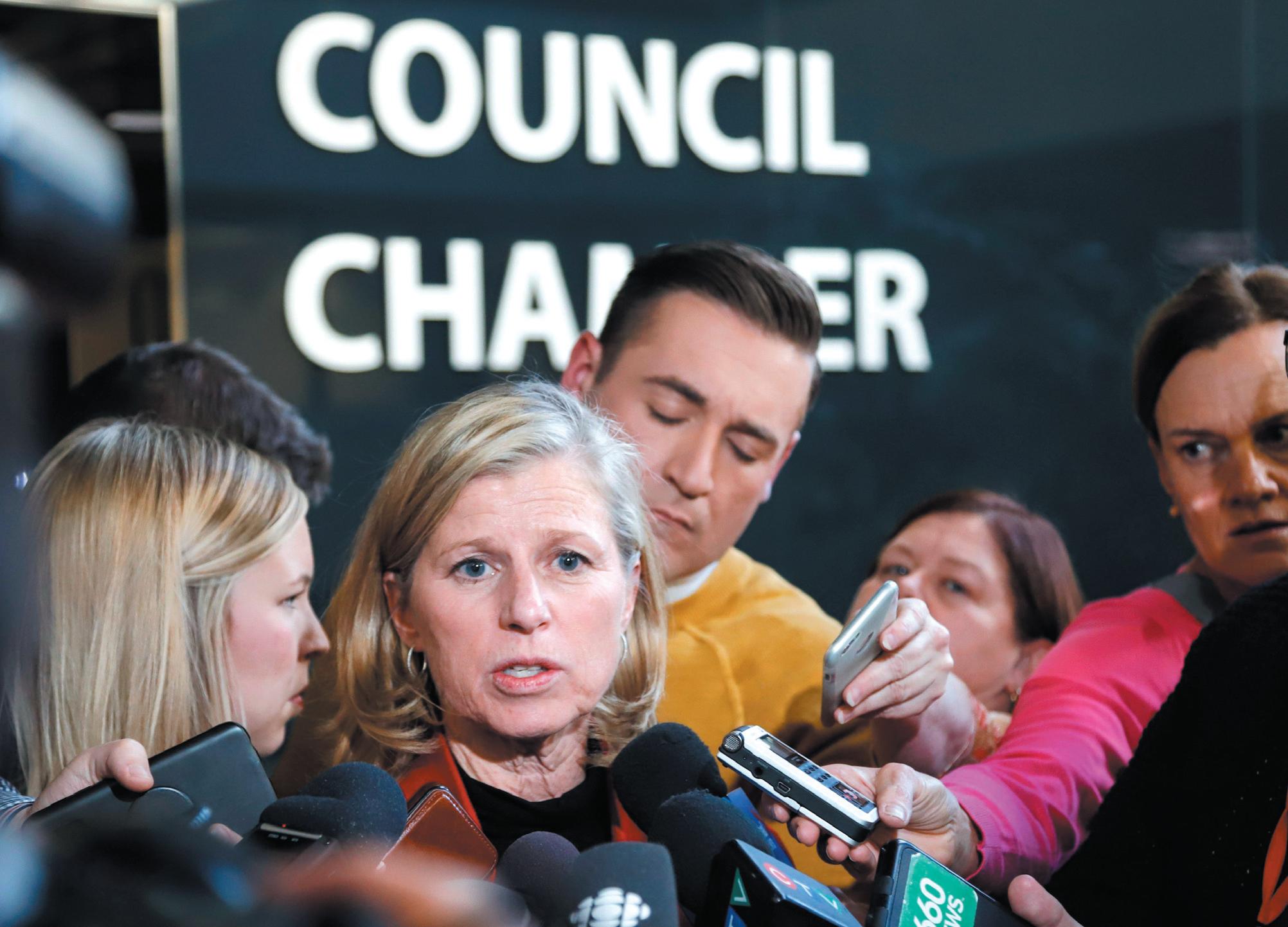
CALGARY
— A potential Calgary bid for the 2026 Olympic and Paralympic Games survived a city council vote Wednesday, when a motion leading to the cancellation of an upcoming plebiscite did not pass.
Ten votes out of 15 on council were required to abandon the Nov. 13 plebiscite asking Calgarians if they want to host the Games or not.
Eight voted in favour of a motion that would have led to abandoning the plebiscite and scrubbing a bid.
Calgary mayor Naheed Nenshi was among those who wanted the plebiscite to go ahead.
“It was a very close vote,” the mayor said.
“Over the next few days I will be trying to explain this deal to people, but I’m now at the point where I can actually say to people ‘this is a great deal we’ve negotiated’ and I’m encouraging people to vote yes.”’
The plebiscite’s result is non-binding, but will influence the next council vote on a Winter Games bid.
Mail-in ballots for the plebiscite were mailed out earlier in the week. Advance voting is scheduled for next Tuesday and Wednesday.
“This is a great opportunity for Calgarians,” Calgary 2026 chief executive officer Mary Moran said. “Now it’s important for them to get
informed and understand this is a good deal.
“This is $4.4 billion of investment coming into our community that should be taken very seriously.”
It appeared a bid was headed for the ditch Tuesday when a councillor said there wasn’t a financial agreement between the federal and provincial governments and the city to fund the Games.
But Calgary 2026 presented a revised financial plan, which the Canadian and Alberta governments agreed to in principle, to council Wednesday.
The estimated cost of hosting the 2026 Games was reduced by $125 million to a total of $5.075 billion.
A pro-Olympic rally drew dozens of redclad supporters to the steps of city hall before council met. Those who didn’t make it into chambers sat in chairs and watched proceedings on a screen outside the doors.
But a Canadian Taxpayers Federation representative was dismayed a bid wasn’t abandoned Wednesday.
“The CTF will be continuing to educate the public on why the Olympic bid is just not a good choice for Calgarians,” said Alberta director Franco Terrazzano.
“Unfortunately today city council did not end the bid. This is a smoke-and-mirror show right now. We don’t have a deal between the

three levels of government. We have a deal to start negotiating a deal.”
Calgary 2026 dropped the required public investment from $3 billion to $2.875 billion.
The Alberta government’s commitment remained at $700 million, while the federal government would provide a total of $1.453 billion.
“We support the Calgary Olympic bid,” Prime Minister Justin Trudeau said Wednesday in Ottawa. “Calgary is a world-class city. It would be great to host the Olympics in Canada, but obviously the ultimate decision is up to Calgarians and Albertans themselves.”
The city was asked to contribute $390 million, which includes $20 million to pay the premium for a $200-million insurance policy against cost over-runs.
Calgary 2026 has said $1.1 billion in contingency funds are built into the draft host plan to mitigate financial risk and that the $200 million in insurance is included in that figure.
The $150 million already committed to improving the Victoria Park area – which is a proposed Games hub – was included in the city’s contribution to 2026 as a credit, in order to get matching funds from the federal government.
The IOC has committed $1.2 billion in cash and services to the 2026 host city. The IOC will accept bids in January and the host city will be elected in June.

Citizen news service
KAMLOOPS — Alberta Premier
Rachel Notley says it’s “just dumb” that the Canadian economy is losing millions of dollars a day because the province can’t get its oil to world markets.
Notley took her message on the importance of the Trans Mountain pipeline expansion to steelworkers meeting in Kamloops on Wednesday.
She warned them that jobs across the country – including theirs – are at risk every day the Trans Mountain project doesn’t go ahead.
She repeated her oft-made observation that a shortage of pipelines means most of Alberta’s oil moves by rail or truck to the United States.
That means it is selling for almost $50 less a barrel than on world markets.
Notley says that can’t continue because it is costing the Canadian economy upwards of $80 million a day, or $60,000 every minute.
“We happily let billions of dollars evaporate from our economy so that Americans can pocket (it),” she told a conference of the United Steelworkers union in Western Canada on Wednesday.
“This is just dumb. It’s just dumb. I can’t get any more clear than this,” she said to applause.
“It should be our money that is in our economy. Not the Americans’. It should be invested in Canadian priorities, not border walls and private prisons.
“But that is exactly what is happening right now.”
Notley said the Trans Mountain project would bring $400 million in construction activity to the Kamloops area alone, as well as an added $6 billion in revenue to the British Columbia government over 20 years.
“Does it make sense to turn our backs on the tangible economic and community benefits that Trans Mountain will provide to communities throughout Canada?”
The expansion would triple the amount of oil flowing from Alberta’s oilsands to the B.C. coast and from there via ocean tankers to world markets.
Retired bus driver Iain Gray ambled through Calgary’s cavernous Greyhound depot on its last day in operation, a gold pin with the bus company’s logo on his jacket.
Gray dropped by the station on Wednesday – the last day for most Greyhound routes in Western Canada – in the hopes of visiting a former colleague after his final run from Revelstoke.
“It’s just a blooming shame,” Gray, who is 77 and drove buses for 30 years until 2003, said of Greyhound’s exit.
“It’s the best place to work at. You couldn’t imagine how good it was.”
Greyhound announced in July that it would wind down all but one of its routes in Western Canada and northern Ontario. A U.S.-run route from Seattle to Vancouver is the only one that remains.
Gray said he loved doing local runs, particularly through the Crowsnest Pass in southwestern Alberta and into the British Columbia Interior.
“I liked going through the little towns and the people,” he said. “You get to know the agents and all that kind of stuff.”
Two weeks ago, he flew to Salmon Arm to go fishing with his brother and decided to take the Greyhound back to Calgary.
“The bus was full, believe it or not,” said Gray, who noted that service had been reduced to two trips a day from five or six.
“If you talk to the driver, those trips are full, but that’s not enough to keep the company running.”
Ottawa announced Wednesday that Canadians left isolated will have to wait two years for potential permanent replacements. Federal Transport Minister Marc Garneau said the government is open to helping affected provinces pay for bus service in communities where other companies have not taken over.
Greyhound’s decision ends service in some 400 communities and leaves about 420 people out of work. The carrier has been active in Canada for about 85 years, but has seen a 40 per cent decline in rural ridership over the last decade.








Ted
CLARKE Citizen staff tclarke@pgcitizen.ca
Two-person team curling, also known as sturling, is about to rock the house in Prince George.
To try to get more people interested in playing the game, the Prince George Golf and Curling Club is starting up a sturling league this fall, with teams gathering on Wednesday mornings for two draws per day beginning next week.
“I think it will go over well,” said PGGCC member and sturling league organizer Jamie Mould.
“We had a little tryout last spring and a lot of people gave it a try and indicated they would consider doing it.”
Sturling is a variation of stick curling, a game created about 12 years ago which addressed the needs of curlers who, due to physical limitations or just personal preferences, are unable or uncomfortable with releasing stones out of the hack using the standard slide position. Sturling players have their choice of using a stick or the traditional sliding motion to throw their stones.
In sturling, the two players on each team stand at opposite ends of the rink and are not allowed to cross the centre line to discuss shot selection except during their two allowed timeouts. Sweeping or brushing is allowed only from the hog line to the back of the house.

Each player alternately delivers six stones per end and after each end they switch from delivering to receiving the stones.
Games are six ends, with a seventh end played if necessary to break a tie. If a seventh end is needed, each team member will deliver three stones and the role of each player will reverse halfway through that end. Each player will throw at least 18 stones, close to
that of an eight-end game of traditional curling. The format reduces likelihood and degree of lopsided games and reduces the time it takes to complete a game.
“You can actually play a game in an hour and (the registration fee is) half the price of what a regular league is,” said Mould. “They only have to prep the ice once, for two games. Because there’s no sweeping you’re not burning the pebble
off (the ice).”
At the start of each delivery, the skip has the option of placing one foot in either hack or can begin anywhere inside the hog line with the stone touching the centre line.
To encourage more offence and make the game more interesting, players are not allowed to remove any stone prior to the delivery of the fourth stone of each end. If that does happen, the delivered
stone is removed and all other stones are placed back to their original positions. The rule extends the free guard zone from the hog line to the back line. All stones must be released before reaching the hog line.
There are no age or gender restrictions and the game will also appeal to wheelchair curlers.
PGGCC members Mould and Gary Shalansky played as a team last year in the Canadian stick curling championship in St. Albert, Alta., winning five of their eight games at the triple-knockout tournament. They are leading the push to get sturling started in the city. At least 16 teams have signed up for the season.
Like most clubs across Canada, the PGGCC has seen curling participation drop from 10 or 15 years ago but at the Prince George club Mould said the number of local players is no longer in decline and has leveled off the past three years.
“Last year it was still over 400 people who played in a league at least once a week, and lots of people played two or three times a week,” said Mould.
The club is offering players a chance to try out sturling free of charge for an introductory period. An an online registration form is available at www.shalansky.com/ PGSturling/Sturling.html, which also explains the rules. Sturling draws will be played Wednesdays at 10:30 and 11:30 a.m. For more information, call 250563-0357, extension 104.

Ted CLARKE Citizen staff tclarke@pgcitizen.ca
Coming off consecutive Canada West conference all-star awards, UNBC Timberwolves defender Gordon Hall set his own bar even higher in his final season playing U Sports soccer.
Denied his wish to play in the playoffs with the T-wolves for a second-straight season when the T-wolves finished an agonizing fifth in the Pacific Division standings, Hall’s presence in the league as a dominant centre fullback did not go unnoticed.
On Wednesday Hall was named to the Canada West first all-star team, becoming the first UNBC athlete ever to make the conference first team, while women’s team forward Paige Payne was selected to the Canada West second all-star team – another first for UNBC.
Hall, a six-foot-one native of Chilliwack, built a reputation in his five years with the T-wolves as one of the toughest backliners in the league and this year was no exception. He played in all 15 games and picked up one assist and seven of the 10 shots he took were on goal. As a defensive specialist, Hall’s stats don’t tell the tale of how many opposition scoring chances he scuttled and how valuable he was to the T-wolves’ bottom line.

“Gordon is a fantastic leader and he just comes across as a true professional,” said T-wolves women’s team head coach Neil Sedgwick.
“He understands his responsibilities to the team and goes out there and makes sure those things are taken care of. He’s tough as a central defender but at the same time he can be a smooth attacking player.
“Steve (men’s team head coach Simonson) gives him other re-
sponsibilities and he’s always able to fill those, both on defence and attack. It just shows what a professional attitude he has. He’s tough, he’s fast, he’s strong, he has all the tools.”
Payne played in all 14 regular season games and set new T-wolves single-season records for goals (eight) and points (12). Her goal total was just one shy of the T-wolves’ entire team output
Citizen news service
SAN FRANCISCO — Willie McCovey, the sweet-swinging Hall of Famer nicknamed “Stretch” for his 6-foot-4 height and those long arms, died Wednesday. He was 80. The San Francisco Giants announced McCovey’s death, saying the fearsome hitter passed “peacefully” on Wednesday afternoon “after losing his battle with ongoing health issues.”
A first baseman and left fielder, McCovey was a .270 career hitter with 521 home runs and 1,555 RBIs in 22 major league seasons, 19 of them with the Giants. He also played for the Athletics and Padres.
“You knew right away he wasn’t an ordinary ballplayer,” Hall of Famer Hank Aaron said, courtesy of the Hall of Fame.
“He was so strong, and he had the gift of knowing the strike zone. There’s no telling how many home runs he would have hit if those knees weren’t bothering him all the time and if he played in a park other than Candlestick.”

MCCOVEY
McCovey made his major league debut at age 21 on July 30, 1959, and played alongside the other Willie – Hall of Famer Willie Mays – into the 1972 season before Mays was traded to the New York Mets that May.
McCovey batted .354 with 13 homers and 38 RBIs on the way to winning the 1959 NL Rookie of the Year award. The sixtime All-Star also won the 1969 NL MVP and was inducted into the Hall of Fame in 1986 after his first time on the ballot.
McCovey had been getting around in a wheelchair in recent years because he could no longer rely on his once-dependable legs, yet was still regularly seen at the ballpark in his private suite. McCovey had attended games at AT&T Park as recently as the season finale.
“I love him so much. It’s a very sad day for me. We were very close,” Hall of Famer Orlando Cepeda said in a telephone interview. “Willie McCovey was not only a great ballplayer but a great teammate. He didn’t have any fear. He never complained.
“I remember one time in 1960 they sent him down to the minor leagues after being Rookie of the Year the year before. He didn’t complain. He was very polite, he was very quiet. He was a great man, a great friend. I’m going to miss him so much.”

for the previous season. In the first round of playoffs she scored in regulation time and also found the net in the shootout to help UNBC defeat Manitoba 2-1 on penalty kicks last Friday. Payne had UNBC’s goal Sunday in a 3-1 quarterfinal loss to UBC, which ended their season.
“Paige is a good player who makes good decisions and she’ll continue to challenge the top defenders. She will say she doesn’t do anything alone and as she has improved the team has improved and that’s provided her more service. But there’s been a couple of goals this year that she’s created single-handedly.”
The five-foot-four native of Kitimat had one goal and one assist in her previous two Canada West seasons since joining the T-wolves in 2016. She’s the first UNBC female soccer player to be picked an all star in the seven seasons the T-wolves have competed in the league.
“I’m incredibly excited for her, it shows all the focus and work she’s put in over the years has paid off with some recognition from the coaches in Canada West,” said Sedgwick, who first saw Payne when she auditioned the year after she played in Prince George as a Grade 11 student.
“Some people knew about her and then she came for a visit when I first took the position and I was able to see her play and I thought she had some very special qualities, so we offered her a spot on the team.”
“She had a fantastic year, she became a player that contributed in every game in one way or another,” said Sedgwick. “The opposition showed her respect in the coaches’ comments about her play and the way the opposition began to defend her. They didn’t give her much space but she was able to find spaces or create space to make things happen.
Ted CLARKE Citizen staff
Next Saturday when the College Heights Cougars line up on their side of the Masich Place Stadium turf to take on the South Kamloops Titans in their B.C. Secondary Schools Football Association junior varsity playoff quarterfinal, the Cougars will be right at home.
Now that the city has a field turf playing surface, Prince George teams no longer have to travel to Kamloops or Chilliwack to fill a home playoff date and that suits the Cougars just fine. The less travel, the better.
Home or away, it doesn’t seem to matter to their bottom line. College Heights has been on an undefeated roll since the season started in September and Tuesday night in the junior varsity P.G. Bowl the Cougars improved to 8-0 with their 40-14 win over the Nechako Valley Vikings.
goal line few plays later. On the ensuing kickoff, Adams ran it back 75 yards for a major. The Cougars added two more touchdowns after Adams scored and took a 26-6 lead into the locker room at halftime.
That win gave them the right to fill the host team slot and host a playoff game in Prince George for the first time since the formation of the BCSSFA’s North Division in 2016.
That win gave them the right to fill the host team slot and host a playoff game in Prince George for the first time since the formation of the BCSSFA’s North Division in 2016.
The Vikings had their hands full trying to contain the Cougars’ lightning-and-thunder running backs – Austin Adams and Alex Thanos – who both scored two touchdowns in Tuesday’s North Division championship final.
“Austin Adams is lightning in a bottle, that kid, he is fast and he covers up a lot of mistakes,” said Cougars head coach Grant Erickson. “His play is the sweep and if he gets the corner he’s gone. There’s nobody who can catch him.”
The six-foot, 185-pound Thanos was the player of the game for College Heights –a constant threat rushing the ball and a speedy sure-handed receiver. He hauled in several passes and was a beast from his inside linebacker position, leading a pass rush which kept Vikings quarterback Kayden Young scrambling out of the pocket.
“Alex carried the heavy lifting on those inside runs and if you’re able to move the ball inside then that opens everything up,” said Erickson.
The Cougars scored on their first drive of the game but Nechako Valley kept it close until the second quarter. The Cougars were within striking distance again in the first drive of the second quarter and had the ball on the Vikings’ two-yard line when Nolan Weinhardt intercepted a Jerome Erickson pass. Weinhardt appeared to be heading for TD territory when he dropped to the turf in pain at the College Heights 30-yard line, in agony after dislocating his hip. Fred Nelson ran the ball across the
“They’re a big strong tough team and the score doesn’t reflect how the game went – it was a lot closer than the score, they made us work for that one,” said coach Erickson. His son Jerome threw for 110 yards and two touchdowns. Hayden Matheson hauled in two Erickson passes for touchdowns, one from 15 yards out and one from 25 yards. Matheson also patrols the Cougar backfield and had three interceptions Tuesday. Offensive guard/defensive end Teancum Arnold, who stands six-foot-one and weighs 230 pounds, was the player of the game for Nechako Valley. The Vikings scored their second touchdown on a scramble, a long pass from Wyatt Steffy to quarterback Kayden Young. In addition to their six wins against North Division teams (which includes a 2-0 forfeit decision over Nechako Valley), the Cougars played two provincial opponents in road exhibition games in September. They beat Robert Bateman 38-0 on Sept. 15 in Abbotsford, then traveled to North Vancouver the following week, where they defeated Argyle 22-12.
South Kamloops finished second in the Interior Division with a 4-3-0 record to qualify for the quarterfinal round. On Sept. 22 in junior varsity exhibition play in Kamloops, the Titans topped the Kelly Road Roadrunners 38-0.
“It’s going to be awesome, I can’t wait,” said Grant Erickson, who has sideline help from assistant coaches Tommy Heinzelman and Rob Sherlock. “We have hosted (a provincial playoff) before but it’s always been at the closest turf field to us, but we were still the host team.
“I think we’re in a good spot. This group sees how far they’ve advanced since they started and I keep telling them it’s just a product of their hard work in practice. They expect to be competitive every time they take the field and I love working with them, it’s a great group of kids.”
• In the senior P.G. Bowl Friday night at Masich, the Prince George Polars and Kelly Road Roadrunners will meet in the Northern Conference senior double-A varsity championship (7:30 p.m. start), otherwise known as the P.G. Bowl. For the Polars, who won all three of their regular-season games and beat Nechako Valley 54-16 in a semifinal last week, it’s a chance to defend their title and remain undefeated. PGSS beat College Heights 31-11 for the Matt Pearce Memorial Trophy last year. The Roadrunners advanced after their 12-8 semifinal win over College Heights. The Cougars and Vikings will clash in the third-place playoff Friday at 5 p.m. at Masich.
Philip MARCELO, Bob SALSBERG
Citizen news service
onfetti cannons
Cboomed and huge crowds of fans cheered wildly on Wednesday as the Boston Red Sox rumbled through downtown aboard duck boats to mark the team’s fourth World Series championship in the past 15 years.
One of the team’s championship trophies and team manager Alex Cora were hit by flying cans of beer that Boston fans have made a practice of offering their sports heroes during recent victory parades. Neither was seriously injured and it didn’t take any varnish off the shining celebration.
The rolling rally set off from venerable Fenway Park and wound its way through major city streets lined by fans numbering in the hundreds of thousands, some who arrived before dawn.
Bits of red, white and blue paper rained down as team officials, players, and their families waved from the amphibious, Second World War-era vehicles. Some autographed balls and drank beers tossed to them from the jubilant throng.
Many in the sea of Red Sox jerseys and ball caps took advantage of the fact that the parade coincided with Halloween.
Young children dressed up as comic book and Disney characters, 20-somethings from the city’s numerous colleges sported full-body panda and dinosaur outfits, and fans took selfies with a doppelganger of pro wrestler Hulk Hogan roaming the crowd.
“It’s been nothing but love. We’re out here having a good

time. We’re turned up,” said Jarrick Fidalgo, a New Bedford, Mass., native with his face painted in the diabolical red, white and black of the Joker from “Batman.
But it wasn’t all carefree fun. Cora, one of the team’s four World Series trophies, and a bystander were among those hit by errant beer cans. Cora and the trophy were barely scathed, but the bystander was urged to get treatment for a gash on her nose, The Boston Globe reported.
Patrick Connolly, a 19-yearold from Sandwich, Mass., was charged with assault and disorderly conduct for allegedly hitting
Cora with an unopened beer.
Connolly told the arresting officers, according to the Globe: “I love Cora. I didn’t mean to hit him.”
Police Commissioner William Gross said there were five other parade-related arrests, including a 17-year-old charged with illegal firearm and drug possession.
Security was tight along the route, which took the team past the site of the deadly 2013 Boston Marathon bombings.
Public drinking, in theory, was banned, but many fans still liberally swigged from small vials of liquor and cans of beer.

Throughout the day, spontaneous anti-Yankees chants rang out, a nod to the long-running rivalry between the American League squads.
Countless Boston-area youths skipped class to take in the parade.
“I heard there were six people in my history class today. Everyone is here,” said Max Colognesi, a 16-year-old from nearby Chestnut Hill who joined friends near the ballpark. “I have a lot of homework when I get back, but it’s worth it.”
During a pre-parade ceremony at Fenway, Cora thanked fans for supporting the team as it won a
RENTON, Wash. (AP) — Jack Patera, the first head coach in the history of the Seattle Seahawks, has died at age 85. Patera died on Wednesday, the team said. The cause of death was not clear, but Patera had been battling pancreatic cancer. Patera was Seattle’s head coach for parts of seven seasons, beginning with the team’s inaugural season in 1976. Patera’s best seasons came in 1978-79 when the Seahawks went 9-7 in consecutive years, but failed to make the playoffs. Patera was named the NFL coach of the year in 1978 when the Seahawks missed the playoffs by one game. Seattle didn’t reach the post-season until 1983. Patera was fired after starting the 1982 season 0-2 and finished his career as a head coach with a 35-59 record. Before joining the Seahawks,
team-record 108 games before beating the New York Yankees, Houston Astros and Los Angeles Dodgers in the playoffs.
“I’ve been saying since Day One, this is crazy, this is madness,” he said.
Boston fans learned even more good news Wednesday when pitcher David Price announced before the start of the parade that he planned to stay in Boston, declining a contract option that would have enabled him to become a free agent.
On Tuesday, the team announced they were exercising their $15 million option for next season to retain another star pitcher, Chris Sale.
Though some fans were enjoying their first championship parade, many others, like 23-yearold Derek Safford, were veterans.
The North Attleborough, Mass., resident and his family have attended every parade since 2004, including celebrations of titles for the New England Patriots, Boston Celtics and Boston Bruins.
“I know people had doubts at the start of the season with Cora being a first-time manager, but he really made a family-like atmosphere and brought this team together,” Safford said from his prime vantage point on Boylston.
Bob Gardner travelled up from Newtown, Conn., with his wife and their 17-year-old grandson, Andrew. They took in the spectacle from near Fenway.
“It’s an incredible thing because the team itself reflects so many good things – redemption, pride, teamwork – especially at this point in our country’s history,” he said. Andrew agreed, saying: “It’s just a special team. I’ll tell my kids about this team. My grandkids.
“I’ll never forget this moment.”
Patera was an assistant coach for the Los Angeles Rams, New York Giants and Minnesota Vikings. Patera also had a seven-year playing career with the Baltimore Colts, Chicago Cardinals and Dallas Cowboys between 1955-61.
EL SEGUNDO, Calif. (AP) — Los Angeles Kings goalie Jonathan Quick is out indefinitely after undergoing surgery on a torn meniscus in his knee, the club announced Wednesday. Quick has appeared in just four games this season for the Kings, going 0-3-1 with a 4.55 goalsagainst average. He missed five games with a lower body injury after playing in Los Angeles’ season opener, but has allowed 14 goals in three games since returning. He didn’t play in the Kings’ two most recent games while nursing a different lower body injury. Coach John Stevens had said he didn’t think the current problem would sideline Quick for a lengthy amount of time.
For her first starring role in TV with the new Amazon Prime Video series Homecoming, Julia Roberts defaulted to the world she was well familiar with.
“We shot it like a film, we treated it like a film,” said Roberts, who also served as an executive producer and requested that Mr. Robot creator Sam Esmail direct all episodes of the half-hour noir.
“We had all the scripts at the beginning. I tried to dress the television idea up as much as a movie as possible, just knowing that we were going to hit the ground running,” she added in an interview at the recent Toronto International Film Festival, where Homecoming screened.
“I wanted to be as prepared as I could be, I wanted to have as much confidence and comfort as I could have in this new endeavour.”
Launching Friday, Homecoming stars the Oscar-winning actress as a former caseworker from a top-secret transitional support centre for soldiers returning to civilian life.
The story jumps between her time at the facility in 2018 and her current life in 2022, when she’s a waitress living with her mother, played by Sissy Spacek, and can’t remember anything about her former career.
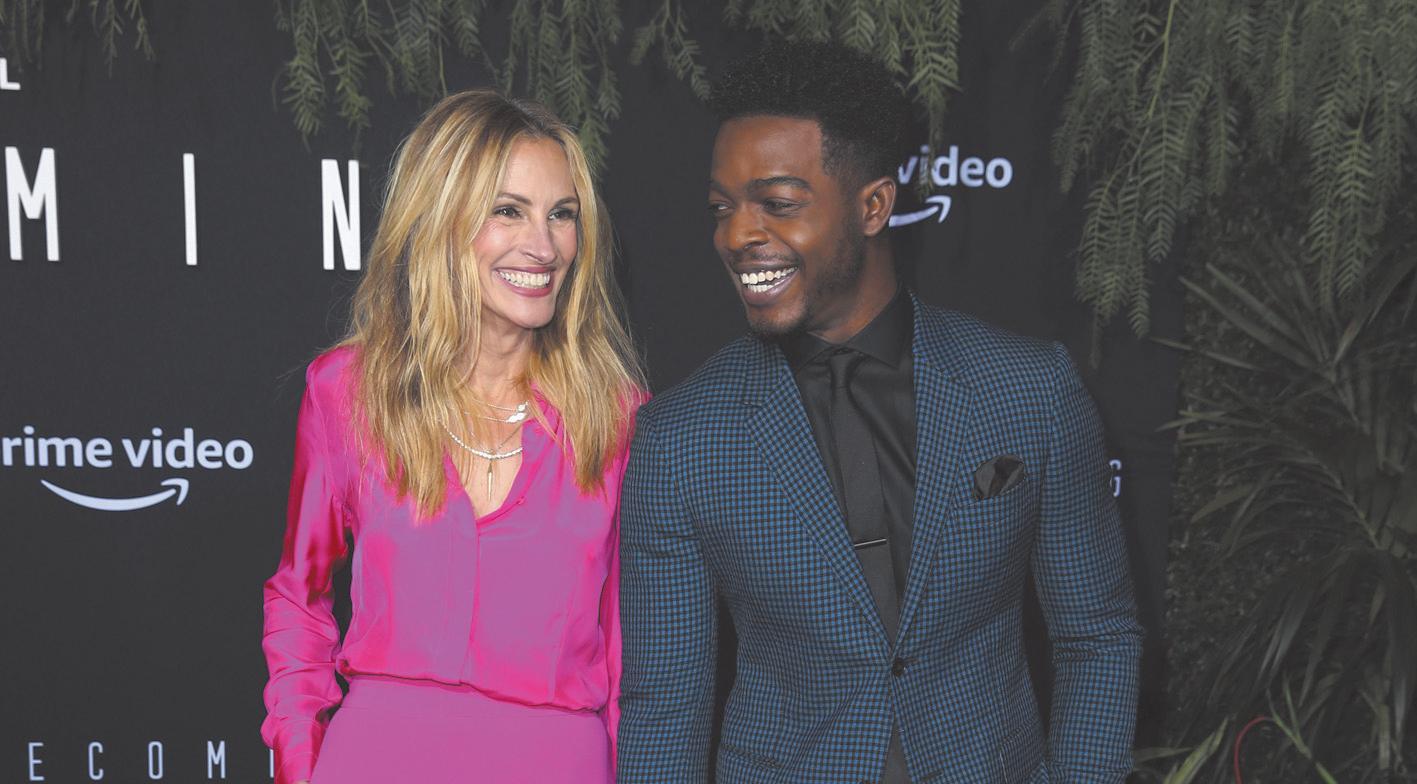
Toronto native Stephan James co-stars as one of the soldiers who bonds with Roberts’s character, while Shea Whigham plays a Department of Defense auditor who investigates a mystery surrounding the facility, and Bobby Cannavale plays the facility’s head. The cast also includes Jeremy Allen White, Alex Karpovsky, and Dermot Mulroney, who co-starred with Roberts in the 1997 romantic comedy My Best Friend’s Wedding.

Roberts said the psychological thriller highlights the difficulties ex-soldiers face in trying to adjust to civilian life after they’ve “made the greatest sacrifice that a person can make.”
“They make these incredible sacrifices and then they come home and, from what I’ve read and watched and heard, become this invisible person,” said Roberts, who won an Oscar for best actress in 2000’s Erin Brockovich.
“You just become a civilian, so you’re one of many, as opposed to this incredibly special, unique, heralded human who risked everything for the rest of us just to be free to be in line at the grocery store. So is there work that can be done? One-thousand per cent.”
James’s character is searching for a sense of belonging after his service, he said.
“I think you have so much purpose when you’re out doing a job like that, that when you come home, I’m sure that’s a scary thing, to see where you fit in,” said James, whose other projects have included the Jesse Owens biopic film Race.
“How do you normalize things? How do you just go on living, knowing what you have done and where you’re coming from?” Eli Horowitz and Micah Bloomberg, who created the 30-minute podcast that inspired the series, also wrote and co-produced the small-screen adaptation.
Esmail said Roberts “jumped onboard pretty early on” after he reached out to her. He was a “massive fan of hers” and intimidated, he admitted, but Roberts was genial and shared the same vision for the show.
“She was involved in every step of the process – from the writing to the production to post. She looks at every cut,” said Esmail. “The good thing about her is, because she is so down-to-earth, she acts like she’s one of our team members. She’s not acting like a holier-than-thou diva or anything like that.”
Bobby Orr provided hockey one of its most iconic pictures with his flying, horizontal celebration after scoring the winning goal in the 1970 Stanley Cup final.
The Bruins defenceman beat St. Louis Blues goalie Glenn Hall from the lip of the crease just 40 seconds into overtime of Game 4 to complete the sweep and send fans at the old Boston Garden into a frenzy.
Orr remembers the moment well – the joy on the Hall of Famer’s face is woven into the sport’s fabric – but as he explains in his new book Bobby: My Story in Pictures, a photo differs from a memory.
“It represents a single moment in time,” Orr writes. “When you look at a picture, you might think at first that you’re just looking at a person, or maybe a place or some object.
“But really, you’re looking at a time.”
In his new book out this week, Orr shares plenty of his own intimate moments in time.
There are photos of his parents, pictures from his childhood growing up in Parry Sound, Ont., the start of his hockey career, his triumphs, heartbreaks, and life following a premature retirement at age 30 because to injury.
“It was a fun process,” Orr said in an interview with The Canadian Press this week. “A trip down memory lane. Seeing old friends, being able to put some of them in there was great.”
The 70-year-old Orr also wrote a 2013 autobiography titled Orr: My Story, but said the new book gives readers the opportunity to experience what shaped him through pictures.
“I wish I could have put more photos in there,” he said. “Seeing everything was nice.”
There are the ones of his father on a corvette in the Royal Canadian Navy in the Second World War – including an outdoor hockey game with shipmates during some down time – and his mom and dad in a canoe passing the camera back and forth to take pictures of each other.
There are shots of grandparents,

hockey buddies, siblings, and personal family moments with his wife, Peggy, and their sons.
“We had tons of photos,” Orr said. “Then we had to whittle it down.
“It took a long, long time.”
There’s the picture of Orr and a Bruins teammate on the shoulders of wrestler Andre (The Giant) Roussimoff, another of the time he played golf with comedian Bob Hope, LPGA star Juli Inkster and former U.S. President Gerald Ford.
“It was a round that you didn’t want to end,” Orr recalled with a smile. “We laughed for five straight hours.”
The overtime goal in 1970 is presented in three frames, but there’s another lesser-known picture of Hall and Blues defenceman Noel Picard, the player who helped launch Orr in the air, with their heads bowed as the crowd focuses on the Bruins’ celebration.
“Their attention is directed towards the corner of the ice at the exact moment,” he writes of Boston fans. “I am on the bottom of the pile. That’s the winning part of this moment in time.”
But not all of the moments in the book involve good memories.
There’s a picture of Orr in a Canada jersey before 1972 Summit Series, which he would miss
because of his troublesome knee. There’s also one of him putting on a brace and of the MRIs of his knees, while the book’s cover has him seated and empty lockerroom wearing shorts to emphasize the scars from his surgeries.
Orr won the Norris Trophy as the NHL’s best defenceman eight straight times between 1968 and 1975, took the Hart Trophy three straight years as league MVP (1970-72) and grabbed the Conn Smythe Trophy as the top playoff performer in Boston’s Cup victories in both 1970 and 1972.
He’s still the only defenceman to win the scoring title, doing it in both 1970 and 1975, but wound up playing only 657 games – with a mere 36 total coming in his final three seasons because of his knees.
“It wasn’t hard,” he said of including pictures documenting difficult life moments. “(But) you sit and think, ‘What could I have done, what should I have done.’
You go through all that.”
Orr does wonder what might have been if medicine was different in the 1970s or if he had suited up in a later era.
“I wish I would have played longer,” he said. “My style didn’t help. I liked to have the puck a lot. When you have the puck a lot in our game, you’re going to be hit.”









Chong,Chris October26,2018 ChrisChong,attheageofsixty,passedawayaftera lengthyillnessinpalliativecareattheRoyalVictoria HospitalinMontreal.ThesonofWinnieChanandthe lateJohnChong,heissurvivedbyhiswife,Johanne Riverin,hismother,Winnie(ArlettDale),andhis siblings,Louise,Denise,GregandWayne.Chris’s childhoodhomewasonthePrinceGeorgeAirport whereheandhissiblingsrodedoubleontheirbikes toexploreandlookforagates,sliddownsnowbanks andskatedontherink.Thethreebrotherslivedtheir childhoodlikeitwouldneverend.Theysucceeded eachotheratsummerjobsandfilledthegapathome whentheirfatherdied.ChrismetJohanneafterhis graduatestudiesinMontreal.Theirswasan extraordinaryunconditionallove.Theylivedand taughtinChinaandtheUnitedArabEmirates,and travelledtheworld.Theywerealwaysbyeachother’s side,sharingabottleofSancerrewhentheycamped, collectingfineporcelainsorscouringmarketsinthe pre-dawnforChinesebas-reliefs.Chris’sillness broughtthemhometoMontreallatein2017.He pulledthefamilytogetheratatimeofcrisis,teaching themtoliveinthemomentashedid.Hewasa warrior,astorytellerandinventorofsurprises.Until thefinalthreeweeks,heaccompaniedJohanneon thepianowhenshesang.Inhisgoaltoaddallof Chopin’snocturnestohisrepertoire,hefellthree short,whichhissiblingswilllearninhishonour.

It is with tremendous sadness that we announce the sudden passing of Brent Masse who was born and raised in Prince George, BC. He is already incredibly missed by his wife Jody, their children Jenny, Andie (Al), Morgan (Mike), Roger (Carla) and Toby, as well as his six grandchildren Cody, Sara, Blake, Taylor, Kennedy and Jackson. Brent, predeceased by his parents Doris and Roger Masse, is survived by his siblings, Wayne, Viv, Deb, and Lexi. He will also be missed by many friends and family members whom he entertained with numerous stories, jokes and his gentle teasing that always made them smile. His generous spirit and willingness to help others will not be forgotten. Brent was well known and highly respected by everyone he worked with, especially in the trucking industry. He loved to work but was happy to retire so he could head south before the first snowfall. Brent managed to combine his love for travel, watching hockey games and spending time swimming and boating by wintering in Lake Havasu, Arizona. He was always excited to plan “The Next Trip”. When home, Brent looked forward to spending time with family. He loved camping, fishing and sharing stories around the campfire. He had such fun watching his grandkids enjoy life and their activities and he was always amazed by what they could do. They in turn, were equally amazed by how Papa Brent always knew when it was just the right time to share a sweet treat or a funny joke. He was eagerly awaiting the chance to hug his new grandchild arriving this December. There will be no service at Brent’s request. In lieu of flowers, please consider donating to a charity of your choice in Brent’s name.
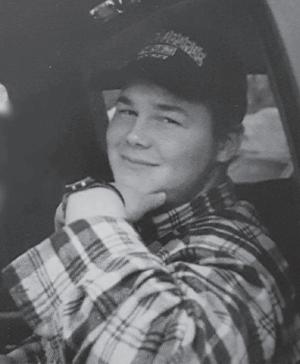

Katherine (Kay) Florence Danis
Kay passed away on Saturday October 27, 2018 in Penticton, BC. Born near Estavan, SK on February 19, 1924 Kay was the third of fourteen children. After moving to Vancouver, BC she met and married Andrew Joseph Danis in 1951. Together they moved to Prince George, BC where they welcomed their only child, Bernadette. After Andrew passed away in 1992, Kay moved to Nanaimo, BC where she lived for eight years. From there, she moved to the Okanagan where she resided in Summerland, BC. Kay was well known for her positive outlook on life and she had a large group of friends, with whom she was very social and active. Kay is survived by her daughter Bernadette Boyer; her grandchildren Adrienne (Nigel) Tom, Jacqueline (Jamie) Eddie, Michael Boyer (Marissa Gutsch); her great grandchildren Neela and Ashton Tom; her sisters Trudy Levasseur and Charlotte Gordon; and her brother Ronald (Elvina) Gordon. A service celebrating Kay Danis’s life will be arranged at a later date. The family asks that a contribution be made in Kay Danis’s name to the Diabetes Association, Unit 220, 6223 2nd Street S.E Calgary, AB, T2H 1J5. Condolences may be made to the family through providencefuneralhomes.com

DAWES,HaroldW. February15,1949-October24,2018
HaroldWallaceDawesmadeittohistransferstation andwenthometoHeavenonOctober24,2018atthe ageof69.Heisdearlymissedbyhisbelovedwife MarthaGail,theirchildrenAmanda(Dan),Michael (Sharon),Emily(John-Michael),andMatthew(Kyla) andtheirthirteengrandchildren,Scott,Henry, Katelyn,Sophia,Jordan,Lauren,Emka,Wade,Eric, Xavier,Isaac,AsherandSean.HaroldwaspredeceasedbyhissisterBarbaraandissurvivedbyhis brothersDavid,DonaldandRobert.Haroldservedhis Lordfaithfulllyandwithincredibleenergyinhis church,inthecommunityandasateacherforover 30years.Hewasresilient,despiteon-goinghealth challengesandalife-longlearner,compassionate, andgenerous.Wearegratefulfortheincrediblecare offeredbythemedicalcommunityhereinPrince GeorgeandinVancouver.Wewillcelebratehislife togetheratSt.Giles’PresbyterianChurchon Saturday,November3,2018at2pm.Ifyouwould liketo,giftscouldbemadetotheSt.Giles’ PresbyterianBenevolentFund,RegentCollege,BC CancerAgencyortheBCArthritisSociety.
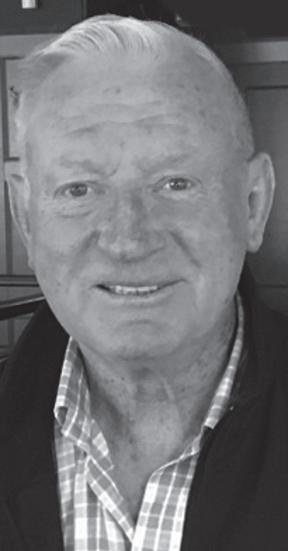
Nechako

Thomas Patrick Moran January 30, 1951~ October 28, 2018
It is with great sadness that the family announce Tom’s passing on October 28, 2018 at University Hospital of Northern B.C. A Celebration of Tom’s life will be held at 2:00
219 East Victoria

Curtis Lloyd Twombly
We are sad to announce the passing of our brother, uncle and friend Curtis Lloyd Twombly. Curtis left us suddenly on October 20, 2018 in Kitimat, BC at the age of 60 years. Curtis was predeceased by his father Cecil Twombly Sr. mother Irene Christen, sisters Sandra Gordon, Christina Alberts, brother in law Rick Gordon and nieces Stacey Leigh Twombly, Heather Lynn Gordon, great niece Breann Shain Twombly and special friend Jan. He is survived by sister Linda (George) Cross, brothers Cecil (Rhonda), Calvin (Shellie), step dad Garry Christen, sister in law Patricia Twombly, brother-in-law Donny Alberts and many nieces and nephews. A viewing will be held Friday November 2, 2018 at 7pm at Assman’s Funeral Chapel 1908 Queensway Prince George, BC. with the Memorial service & reception being held Saturday November 3, 2018 1:30 at the Cornerstone Life Centre 6912 Hart Hwy Prince George BC. In lieu of flowers donations may be made to the Heart and Stroke Foundation.
TheSocietyofSaintVincentdePaulhasbeenserving PrinceGeorgeforalmost40years.Ourmissionisto servethepoorwithlove,respect,justice,andjoy.We currentlyhavethefollowingopportunities: FullTimeDropInCentreManager-responsiblefor managingallaspectsoftheDrop-InCentre.Theideal candidatewillhavestrongorganizationalskillsandbe abletotrainandleadstaffandvolunteerseffectively.A well-roundedindividualisneededwithanunderstanding oflocalsocialserviceagencies,healthandsafety,and supervising. CasualCook/DropInAssistant-providescasualsupport forpositionsresponsibleforbreakfastandlunchmeal preparations,foodhamperassemblyanddistribution, andcleanup. Acriminalrecordcheckandvalidfoodsafecertificateis requiredforbothpositions.Ifyouarepositive, compassionateandenjoyworkinginafast-paced environment,wewouldlovetohearfromyou!Please applywithresumeandthreereferencesbymailtoBox 1617,PrinceGeorge,B.C.V2L4V6orbyemailto svdppg@shaw.ca.Nophonecallsplease.Thankyou. http://ssvdppg.com/















































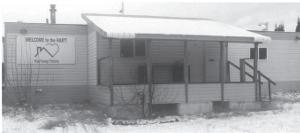


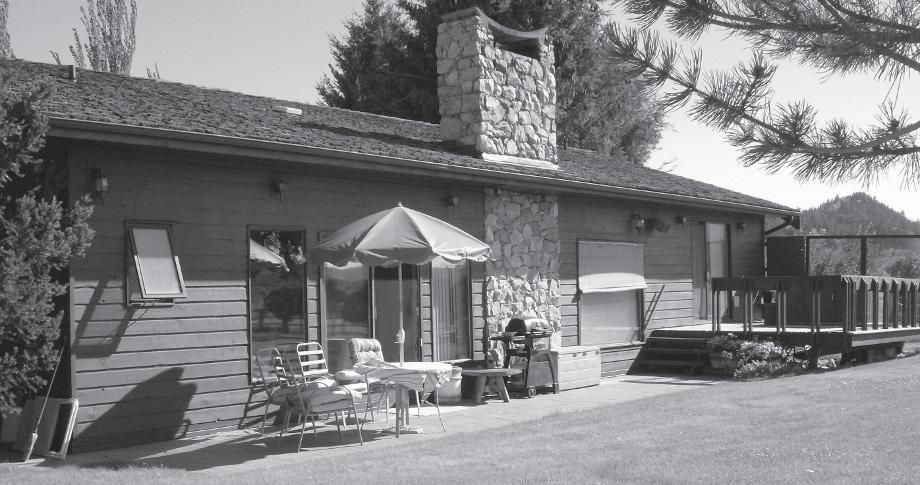
















These are indicative wholesale rates for foreign currency provided by the Bank of Canada on Wednesday. Quotations in Canadian funds.
Citizen news service
General Motors will attempt to cut costs by offering buyouts to about 18,000 white-collar workers in North America.
The company made the offer Wednesday to salaried workers with 12 or more years of service. The announcement comes on the same day that GM reported a $2.5 billion thirdquarter profit. The company says in a prepared statement that although it is performing well, it wants to continue to reduce costs while the company and the economy are strong.
The auto industry faces looming troubles such as slowing sales in the U.S. and China and higher steel and aluminum prices due to U.S. tariffs. Company CEO Mary Barra said on an earnings call that the company is “taking
steps to transform the workforce to ensure we have the right skill sets for today and the future while also driving significant efficiency.”
GM wouldn’t disclose terms of the buyout offers, including how many Canadian employees would be eligible for the package. The company has about 50,000 salaried workers across North America, including about 2,000 in Canada.
Company spokesman Patrick Morrissey wouldn’t say whether GM is trying to reach a target number of employees. Those who were given the offer have until Nov. 19 to make a decision, and they would leave the company by the end of the year, he said.
“Even with the progress we’ve made, we are taking proactive steps to get ahead of the curve by accelerating our efforts to address overall
business performance. We are doing this while our company and economy are strong. The voluntary severance program for eligible salaried employees is one example of our efforts to improve cost efficiency,” the company said.
GM has long talked about reducing costs in preparation for an economic downturn. The company strives to continue churning out profits through vehicle sales while, at the same time, investing in new technologies such as electric or autonomous cars. The company is close to delivering on a promise to reduce structural costs by $6.5 billion annually by the end of this year.
The efficiency push is an effort to stave off any repeat of its financial disaster in the past downturn, said Canadian automotive analyst Dennis DesRosiers.
Day-after-Halloween scary banker stories? Hmmm...
Canada’s main stock index ended a frightening October trading session on a positive by posting a triple-digit gain for a second day in a row. October is typically a weak month, but heading into Halloween day trading it was the worst in a decade before the uptick. The S&P/TSX composite index closed up 132.78 points to 15,027.28 on broad-based gains led by the health-care sector, which includes the big marijuana companies.
“Hallelujah,” said Allan Small, senior investment adviser with HollisWealth. “We had I guess a bit of a relief rally. Whether or not this can be sustained over the longer term remains to be seen.”
It follows Tuesday’s gain of 172.75 points for a 1.17 per cent increase on the Toronto exchange. Still, the market lost more than 1,000 points or 6.5 per cent in October. Small is hopeful of gains for the last two months of 2018, but says that is likely not enough to turn around the entire year.
“I think we see perhaps numbers getting a little better as we get into the year-end. Will we turn positive?. That might be a bit of a stretch but there’s always hope, I guess,” he said in an interview.
In New York, the Dow Jones industrial average gained 241.12 points to 25,115.76 for a 5.1 per cent decrease in October. The S&P 500 index was up 29.11 points to 2,711.74 but off 6.9 per cent in the months. The Nasdaq composite rose 144.25 points at 7,305.90 but lost 9.2 per cent in October.
The Canadian dollar traded at an average of 76.09 cents US compared with an average of 76.14 cents US on Tuesday.
The U.S. markets were helped by good results Tuesday by Facebook, followed by strong reports by GM, Estee Lauder and other large companies. That prompted buying, just as investors moved in lockstep in the selloff, said Small.
“I don’t think this is the end of the bull market. I think this is a pullback and a correction in a long bull run,” he said, adding that the days of double-digit stock growth are past.”
The December crude contract was down 87 cents at US$65.31 per barrel or off 10.8 per cent in October and the December natural gas contract was up 7.4 cents US$3.26 per mmBTU.
The December gold contract was down US$10.30 at US$1,215.00 an ounce and the December copper contract was up half a cent at US$2.66 a pound.
A friend asked me: “What does a workplace accident even look like in your world? Are you gonna fall on your pencil?” But this true story is very scary for those involved. Approving a loan is like Christmas, declining them is Halloween without candy.
A seasoned banker might couch his decline in the most sensitive terms possible. He could say something like: “I’m so very, very, very sorry sir. We have carefully reviewed your proposal from several different angles trying to find a way to write this loan for you. Here is the data compared to our lending criteria. Please correct any errors we have made. It appears that we are not going to be able to lend you the money. We want to wish you all the success in the world. We have identified some alternative lenders for you to consider here…”
No matter how gently he delivered the bad news, invariably what the client hears is: “We are a rich powerful bank. You have been measured and found an insignificant crumb on our table of plenty. Shoo-shoo now. Go crawl away some place where we won’t have to witness the spectacle of your irrelevant life.”
The most frightening thing about banking in a small town is the complete lack of anonymity,

juxtaposed with this sometimes adversarial work.
One of our young bankers accepted a promotion to branch manager, and took his little family to a small B.C. resource town some 20 years ago. Over the next few months they bought a home in a cozy neighbourhood, put their three young children in school, and joined local service and sports clubs, making lots of friends in the community. After about a year, it really started to feel like home.
Then one day he was he was referred an angry customer. A subordinate bank officer had declined his loan request, and (see above) the client felt hurt – which is hard to avoid. Our bank manager did his job holding firm to our banking standards, while gently showing the customer where his request fell short, and even outlined some possible ways to bridge the gaps in the request. But this was some sort of breaking point for the (former) client), who went home steaming mad, and not much later, called back with a death threat directed at the banker’s family. He took his rifle and headed out the door.
In a town this size, the angry would-be borrower knew the
The name of the store is High North, but it might as well be named High and Dry because for all but about four hours of the first two weeks since marijuana was legalized in Canada, there was no pot to sell.
Trevor Tobin, one of the owners of the Labrador City shop in Newfoundland and Labrador, said they went 10 straight days without supply.
“The producers keep saying there will be some bumps in the road, but right now it’s not a bump in the road. It’s a big pothole,” he said.
His mother, Brenda Tobin, is a part-owner and said that after she tells customers there’s nothing to buy, “a lot of them are saying, ‘Oh, well. I guess it’s back to the black market.”’ Legalization arrived Oct. 17, and Canada became the world’s largest national marketplace for so-called recreational marijuana. But for now, it’s a superlative in name only.
The first weeks have felt more like a soft opening with few retail outlets operating and rampant supply shortages.
It’s not because Canada can’t produce enough cannabis products – licensing those producers has been slow, and the federal government is taking steps to speed up the process.
precise house, and even the names and ages of our banker’s wife and children, just as a matter of course. He would have had to make an effort not to know them.
Fortunately the local RCMP were just a local call (not a call centre) away and also knew all the relevant parties, the colour of the assailant’s truck, the location of both homes, and so forth. They too were transferred in to town with young families, one even played softball with the banker. The cops descended on the bad guy like wasps on a chicken wing. I don’t think he even got to out of his own neighbourhood before a full take down squashed his effort. Simultaneously, another squad car went to the children’s school and ushered the children to safety, while still another crew guarded the family home, meeting the banker there.
That very hour, the banker and his family left town and never returned. The bank relocated them, sold their home, moved their stuff, and found him a new position. They also provided professional counseling for years afterward.
So, yeah, banking has its scary moments too.
Happy (day after) Halloween.
In truth, markets have had some frightening Octobers over the years, and although not severe, this one has also had its moments. There’s even a name for it: “The
The provinces are handling the sales and most of the regulations. Reports from around the country are similarly discouraging when it comes to supply.
Quebec closed its government-run shops for three days this week because of a lack of pot and will continue to keep them shut Mondays through Wednesdays until availability is stabilized. Manitoba Liquor & Lotteries said it expects product shortages in both brick-and-mortar and online stores could last six months.
Ontario won’t have any stores open until April at the earliest as the new Conservative government writes regulations. Meantime, police have shut down at least 11 illegal dispensaries in the province.
Ontario residents who want to make legal purchases are flooding the online government store.
At least 150,000 orders arrived in the first week, more than all other provinces combined, and the store can’t keep up.
Contributing to the delivery problem is a strike by workers at Canada Post, the nation’s postal service that handles online marijuana orders that are legal countrywide.
British Columbia still has just one retail store.

October Effect.” Several significant market corrections have occurred in the 10th month, but this, like so many other tendencies, is not reliable, even if this month has spooked a few of us. Most of the past several Octobers has seen the broad-based S&P 500 tick upwards, and even though this October is definitely down, we are ending the month something other than a rock in the goody bag. To close off the month, today the S&P 500 is in the green with all sectors except for the utilities, the real estate and the consumer staples sectors, making positive gains at midday.
According to one RBC analysis this morning: “There is nothing in the data that is consistent with the idea that there are cracks in the fundamental foundation of the US economic backdrop… consumers have not used (up) the tax benefits (yet). Labour markets are exceedingly tight (and we have) more job openings than unemployed.”
So don’t run away. The sun will come up tomorrow!
—Mark Ryan is an investment advisor with RBC Dominion Securities Inc. (Member–Canadian Investor Protection Fund), and these are his views, and not those of RBC Dominion Securities. This article is for information purposes only. Please consult with a professional advisor before taking any action based on information in this article. See Mark’s website at: http://dir.rbcinvestments. com/mark.ryan

Steven Lindsay, a public health entomologist at Durham University in England, has been researching malaria control for decades.
His preferred approach, he says, is to “sit on the boundaries,” drumming up ideas that others might not. So it’s perhaps unsurprising that his latest project was inspired by the baggage-claim area at Dulles International Airport. If the beagles there could use their noses to detect explosives or contraband in suitcases, he wondered, could they also be trained to sniff out an intractable disease that kills more than 400,000 people each year?
Lindsay ended up tackling that question in a project that involved the dirty socks of hundreds of African children and a trio of sniffer dogs in England – and the answer strongly pointed to yes. The dogs correctly identified socks worn by malaria-infected children 70 per cent of the time and those worn by noninfected children 90 per cent of the time.
“I think it is quite extraordinary,” said Lindsay, the lead scientist on a study being presented Monday at the annual meeting of the American Society of Tropical Medicine and Hygiene. “We put these socks on African children for 12 hours, take them off, freeze them for 15 months before we start training and then the dogs can pick up that odour.”
Funding for the project came from the Bill and Melinda Gates Foundation, which put out a call for research on malaria tests that are noninvasive, unlike current tests that rely on blood samples. Lindsay and his colleagues focused on asymptomatic carriers because they play a key role in malaria’s persistence, acting as hidden reservoirs. But finding them is a challenge because current methods make mass testing impractical.
Lindsay and his colleagues gave nylon socks to nearly 600 children who had been tested for malaria in Gambia, where the disease is endemic, and asked them to wear them overnight. Researchers ended up with 30 socks from asymptomatic malaria carriers and 145 socks from children who tested negative for the disease. Those were then wrapped in foil, frozen and sent to England, where they were stored at the London School of Hygiene and Tropical Medicine while a charity called Medical Detection Dogs trained the pooches.
That malaria alters the volatile compounds that make up a person’s odor has been established, and previous research has found that the mosquitoes that spread the disease are more attracted to carriers, including asymptomatic ones.
“If a mosquito can do it,” Lindsay said, “why not a dog?”
Dogs, after all, have proved adept at sniffing out cancer, narcotics, human remains and even orca feces. Just what they’re smelling when they detect disease isn’t clear, said Jennifer Essler, a postdoctoral fellow who works with dogs that sniff for ovarian cancer at the Penn Vet Working Dog Center.
“What we present them with is the blood plasma,” Essler said, referring to her own research. “Does that mean they’re detecting the body’s response to the cancer? Is there something from the cancer in the blood? We’re not really sure.”
Essler’s team is working with scientists from the Monell Chemical Senses Center

in Philadelphia to find out what ovariancancer-detection dogs smell. That’s because the end goal, she said, is not to have dogs screen patients, but to take what’s learned from the dogs to create an “electronic nose” that could screen for ovarian cancer.
“For many reasons, you can’t deploy dogs to a lot of places,” she said. Too, “they’re still beings. There are still days when they come in and have a bad day.”
But the malaria research provides another strong example of dogs’ potential, Essler said: “It’s awesome that people are recognizing the capabilities of dogs and how they can be used to help people.”
When it comes to malaria, Lindsay said he does not envision squadrons of canines patrolling villages in sub-Saharan Africa. Malaria-detecting electronic noses are also one possible outcome of further research, he said.
But in the shorter term, malaria-detection dogs might work at ports of entry in countries that have eliminated the disease and want to keep it out.
There, dogs could identify carriers before they come in, Lindsay said. Training sniffer dogs costs many thousands of dollars, he acknowledged, but “it’s cheap compared to the cost of having malaria come back into your community.”
CITIZEN NEWS SERVICE PHOTOS
Top, Steven Lindsay holds a medical detection puppy in England. Right, Freya, a springer spaniel, has been trained to detect malaria parasites in sock samples taken from children in Gambia.

Humans have always looked into the night sky and marveled at the lights scattered across the celestial sphere. Every culture on our planet has sought an explanation for the stars we see. Ancient Greeks and Persians went so far as to study the sky making note of the unusual, such as the planets.
As civilization progressed and our instrumentation became more sophisticated, astronomers were able to discern the paths and patterns followed by the planets with more clarity.
Observations by Brahe, Kepler, Galileo and Copernicus led to the development of sun-centred or heliocentric view of the solar system.
As instrumentation improved and lenses became more sophisticated, astronomers were able to build better telescopes. Galileo was able to see the four major moons of Jupiter from which he was able to work out the size of the solar system and confirm the heliocentric model.
After all, if bodies could orbit Jupiter then surely the planets


could orbit the sun. The older Ptolemaic model couldn’t explain the observations of Galileo and other astronomers.
But what kept everything going around? What kept the planets in their orbits? What allowed the heavens to be?
The answer is simple – gravity. It is the universal force holding planets to their suns and suns within galaxies and so on.
Isaac Newton was the first to formulate a law for gravity and calculus which allowed scientists to actually work everything out. Or almost everything. Gravity as a force of nature led physics to much of our modern understanding of the cosmos.
Astronomy has changed a lot over the past 300 years and by leaps and bounds over the last 30 years. Much of this is due to better instrumentation – to being able to see farther more clearly and at a host of different wavelengths.
With the discovery of the telescope, astronomers were able to examine all of the stars in the sky. They discovered the new planets Uranus (1781) and Neptune (1846) and the dwarf planet Pluto (1930). They were able to see moons around Mars, Saturn, and the other planets – 181 at last count.
We now have many space-based observatories which allow us to

This illustration made available by NASA shows the Kepler Space Telescope.
see well beyond our solar system and are helping to develop a deeper understanding of the universe.
The most famous is the Hubble Space Telescope which opened up the cosmos in a way which could not be achieved on the Earth’s surface at the time nor imagined by our ancestors as they gazed at the night sky.
Hubble’s deep field images have shown us a Universe filled with billions upon billions of galaxies and each is filled with untold billions of stars. The Universe is a crowded place. But Hubble is not the only space observatory. In 2009, NASA launched the Kepler Space Telescope with the very specific mission of detecting exoplanets – planets circling other stars. We have long suspected other stars had their own solar systems but at interstellar distances, they are hard to see. One method of detecting an exo-
planet is to watch a star wobble. While planets are held in orbit by a star’s gravity, the gravity of a planet also pulls on the star. It is a bit like a pair of figure skaters in a spin. They orbit a mutual centre of gravity with each pulling on the other.
From our perspective, provided the plane of the orbit is oriented towards us, the planet appears to wobble to and fro. Careful observation can detect this wobble and this was the first method which confirmed the existence of exoplanets.
The Kepler Space Telescope used a different approach. As a planet passes between us and its star, it causes the light from the star to dim slightly. This can be seen in our solar system when either Mercury or Venus pass between the Earth and the Sun.
Kepler keeps track of the light intensity of 145,000 main sequence stars similar to the Sun. Variations in intensities have led to the con-
firmed discover of 2,681 exoplanets with another 2,900 waiting for confirmation by independent measurements. Not only is the universe filled with untold billions of stars but the number of planets is staggering. Present estimates suggest half the stars in our galaxy have planets orbiting them and there is no reason to think our galaxy is unique. Astronomers have even found planets in the “Goldilocks Zone” where the conditions are neither too hot nor too cold for liquid water to occur so planets might have Earth-like climates. Unfortunately, NASA announced this week the Kepler Space Telescope has run out of fuel and will cease its work. It is one instrument in the long history of astronomy but it has certainly made a major contribution. Other telescopes will now have to carry on the work. And one day, we might finally find signs of intelligent life in the universe.



Frank PEEBLES Citizen staff
fpeebles@pgcitizen.ca
The sun seems to be rising on the Sunset Theatre.
The longtime performing arts space is prominent in downtown Wells. It has a colourful and twisty history that makes for a prime connection to the next door living history facility of Barkerville.
Now the Sunset is going to burn even more brightly. The operation has received a Strategic Initiative Grant from the BC Arts Council that will allow for the hiring of two new administrative positions.
It will take the organizational pressure off of Karen Jeffery who, with her husband Dave, owns the building and operates the programming inside.
Programming has been ramping up year over year since she and Dave bought the place in 1999, embarked first on a major renovation of the structure, and then started to use it as an important tool for music, film, oration and drama.
Two of the Cariboo region’s best box office names, Julia Mackey and Dirk Van Stralen, will take up professional residence there. It’s helpful that they already live and work in Wells and had a tight preexisting bond with the Sunset Theatre.
Mackey will become the director of presentations, while

Van Stralen will be the director of production, while Jeffery remains artistic director.
“This is a dream come true,” said Jeffery. “I couldn’t ask for two better people to help move the next phase of the company’s growth forward. Julia and Dirk have been stalwart volunteers, exceptional ambassadors of the theatre from the beginning and respected professional theatre artists across the country.”
Mackey and Van Stralen are best known as the creative team behind the internationally successful play Jake’s Gift, which got much of its developmental start at the Sunset.
The pair also helped Jeffery operate the facility on an interim basis a few years ago.
“When Dirk and I ran the theatre for Karen back in 2011,
it was that experience that solidified our desire to move to Wells and become part of the community, and we realized how much we loved being part of the everyday operations of the Sunset,” said Mackey. “We are so grateful to the B.C. Arts Council for supporting this next phase of development for the Sunset, and we are thrilled to jump on board and help move this beautiful theatre into its next chapter.”
Van Stralen said Jake’s Gift was part of the inaugural reopening of the Sunset Theatre, and was a member of the Sunset’s Exploration Series development program in 2006, before they lived in the Cariboo.
Their play got its first public reading on that stage.
“As a result of the success of
Jake’s Gift, we’ve had the privilege of working in dozens and dozens of spectacular venues from coast to coast to coast in this country,” he said. “The Sunset, however, remains my favourite, in no small part because of its unique setting in historic Wells, B.C., an astonishing pool of local professional talent to draw from, and its intimacy as a venue that allows room for great ideas to run wild.”
According to the Sunset Theatre Society, one of its operational agencies, “the building in which the theatre operates is itself a marvelous piece of Wells’ history. First built in 1934, it served originally as a movie house. It went through several more transformations over the decades, functioning as a dance hall, a gambling house and even
a morgue. In the late ’70s the Wells Historical Society operated it as a movie house, but it eventually fell into disrepair. (Karen and Dave) restored the 100-seat historic theatre beyond its former glory.
“This little gem of a theatre offers two full dressing rooms, green room, concession, box office, an impressive costume and prop inventory and a technical infrastructure that rivals most regional theatres.”
Becoming one of those regional professional theatres is the looming goal before Jeffery, Mackey and Van Stralen. The next phase on the drawing board, now that a complement of staff is in place, is, said Jeffery, “growing into a year round professional theatre and performance space for the community of Wells. Our goal is to nurture the creative endeavours of the many talented local artists and artists across BC and beyond.”
In addition to Jake’s Gift, other notable productions have gotten off the ground at The Sunset like Danette Boucher’s and James Douglas’s play The Fred Wells Show, Morag Northey’s 17, Marcel Gagnon’s the Drum Is Calling You Home, Kym Gouchie’s Her Blood Runs Through My Braids, among many others.
It is also home for the Sunset Cabaret, now in its 12th year, along with the Sunset’s concert and film series.


Frank PEEBLES Citizen staff fpeebles@pgcitizen.ca
If you’re a metal queen, a rocker girl, a fierce female of the stage, there’s a spotlight calling for you.
The Metalocalypstick Festival will return this coming summer for its fourth year featuring females. Founded by former Prince George/Robson Valley rock diva Kaija Kinney of Vancouver metal band Anarcheon, Metalocalypstick doesn’t exclude men but it definitively includes women.
“Taking place in the scenic community of Lone Butte, this
two-day festival brings in high quality metal acts from around North America (and beyond) each with at least one powerful female member,” said a statement issued by Kinney and her team of festival organizers.
“Camping while surrounded by mountains and great music, it is the perfect setting to enjoy a vast array of talent across metal, punk and hardcore.”
The next edition happens June 28 to July 1 and submissions are now being accepted to get your music at that microphone.
Some of the highlight acts that have already performed
at Metalocalypstick include the likes of Brazil’s Nervosa, Egypt’s Massive Scar Era, Mexico’s Cabrakaan, Hollywood’s The Maension, Valfreya, Scythia, Mortillery and many more.
“Now is your chance to join the ranks of the talented alumni that have rocked the stage at this empowering event,” said the Metalocalypstick team. “Submissions to play the festival are now open until Nov. 17.”
The application form is available on the event’s website.
In addition to showcasing the diversity of females on the harder edges of rock, the event

also raises money for more of that momentum.
Proceeds raised by the show have been donated to charities like Girls Rock Camp, Vancouver Rape Relief and Women’s Shelter, and Earth Protectors plus they sponsor an independent band picked by Metalocalypstick Fest judges.
“This festival means the celebration of both sexes coming together and creating something amazing,” said Kinney. “People like to say women in metal aren’t a big deal anymore and that we are all the same.
I feel that is untrue, this is still a male dominated world and
women are still looked upon as lesser. I want to showcase all these bad ass ladies and celebrate the differences of men and woman rather than pretend we are all equal. Truth is we are different why can’t we celebrate that?”
At the same time, it draws positive attention and infusions into the local economy since the festival is attracting international eyes onto the Cariboo region.
The application form for Metalocalypstick Festival is available at this link: http://metalocalypstickfest.rocks/artists-2018/ bands/band-submissions/

Frank PEEBLES Citizen staff fpeebles@pgcitizen.ca
It might be hard to keep track of the specific dates, there are widespread reports that the photos are somewhat distracting, but nobody’s complaining. It’s all for charity.
The biennial Prince George Firefighters’ Calendar is ready for pickup. Get ‘em while they’re hot.
All the money raised by these 1,000 calendars goes to the BC Professional Firefighter Burn Fund Association for the many ways they support the victims of burns in this province.
“In the past, the money went to Prince George’s commit-
ment to the provincial Burn Fund Centre, were we funded an accommodation suite, but that commitment has been met,” said Brian Burleigh of the Prince George Fire Rescue Service. “There are approximately 3,900 members of the professional association from B.C. and Yukon.
“The funding goes to the important medical needs at the burn unit at Vancouver General Hospital and BC Children’s Hospital, because those are the facilities where the severe cases from all over the province get transferred, so even if you are from Prince George, that is where the treatment is centralized.
“We also support the Burn
Fund Centre because it is the all-important home away from home for victims and their families. These places help all of B.C., young and old.”
The calendar is in the creative hands of professional photographer Philomena Hughes, one of the city’s most lauded portrait photographers and arts advocates.
Hughes volunteers the time required to design the scenarios, set up the shoot, and carry out the photography. Each photo is of a real Prince George firefighter depicting the physique reflective of their training in life-saving skills.
“These are all staged photos,” said Burleigh, who has been one of the photo subjects in the past
but is doing liaison work this year to arrange the making and marketing of the calendar. “We typically give the 12 firefighters involved about two and a half or three months’ notice. They set up a fitness routine and monitor their diet so they are in tiptop shape, and we also talk with Philomena about where to do the photos and what it should look like.”
This year the theme of the photos does double duty. They are all shot inside some of the city’s top restaurants, drawing attention to the fine culinary culture of Prince George while reminding the public that kitchens are where a lot of heat is concentrated.
Yes, that’s a double entendre.
These photos are not joyless clinical still-life snapshots. They also, in a good-natured way, intend to throw off some inner sparks as well.
The photos were taken at Betulla Burning, Black Clover, Crossroads, Northern Lights Estate Winery, Twisted Cork and some work was also done in-house at Hughes’ studio.
The calendars retail for $20 each.
They are available at Canadian Tire, both Simply Beautiful Jewelry Design & Clothing locations, Victory Paints, and there will be a sales table at Studio Fair where about onethird of the calendars sold in one weekend during their last edition.
In the early 1960s, Yale psychology professor Stanley Milgram performed an experiment which revealed some interesting observations about human response. Though the result and ethics of his experiment have been questioned, his findings continue to cause us to ponder what each of us would do if we had to choose between following directions and showing compassion for another human being.
In the experiment, a subject thinks that she or he is participating in an educational experiment.
They are told to deliver electric shocks to a person on another side of a wall for giving the wrong answers on a test. With each wrong answer, the shocks become more severe.
Though the shocks are not real, they can hear the “learner” (an actor) reacting in pain. If the subject objects says they want to leave, an experimenter in the room tells them that they have to continue.
The experiment ended when the subject refused to go on after four verbal directions to continue, or after 450 volts (a deadly amount if real) were supposedly given to the “learner.”

Milgram discovered that roughly two thirds of people continued the experiment until the strongest shocks were delivered. Even when the experiment was replicated in different locations around the world, the results were quite similar. What does this reveal about us as people?
Are we cruel and heartless? Many of us will ask ourselves, “Would I act contrary to my conscience simply because someone told me to do so?”
Perhaps it is more important, however, to ask what kind of people refused to cooperate. What was it about these individuals that allowed them to walk out of a room and refuse to hurt another person, despite the fact that they were being ordered to do so?
Unfortunately, Milgram did not provide an extensive study of these “resistors,” so there are few definitive conclusions we can draw about them.
As a professional educator who is devoting his career to building a better world, however, I am left with two questions:
What would I do in a situation similar to the Milgram experiment?
How do I help my students develop the confidence to question such an unjust authority?
I recall two incidents which took place when I was in my 20s when I was swept away with the hysteria of a mob, a sort of nondescript authority figure.
Fortunately each time someone said to me, “Hey man, what are you doing?” In that moment, the ridiculousness of my behaviour came to light. That was all I needed to come back to my senses.
But what if I was with others who egged me on? What if I was following the orders of a crazed leader? The answers to these questions are humbling and terrifying. I remain grateful to those who brought to light my behaviour, and I appreciate the fact that I had the presence of mind to listen to them.
For the second question, I believe that we need to look at the qualities of those who will choose personal conscience over conformity, those who will help others, regardless of the risk involved.
Citizne news service
OTTAWA — The Remembrance Day poppy has entered the digital age.
The Royal Canadian Legion launched a digital version of the distinctive red flower, which it says can be customized, shared online and used as a profile image on sites including Facebook, Twitter, Instagram and LinkedIn.
They are available for an online donation at www.mypoppy.ca until Nov. 11 and are meant to complement the traditional lapel poppy, typically available at cafe and convenience store cash registers alongside a donation box.
The Royal Canadian Legion’s deputy director says he hopes a digital version will appeal to younger generations accustomed to communicating on social media.
Danny Martin says it’s also meant to address our “increasingly cashless society,” and make poppies available in parts of Canada where they may be difficult to find.
The bright red poppies are meant to be worn from the last Friday of October until midnight, Nov. 11. Martin says this year’s poppy can be used with a butterfly clasp being sold alongside the poppy to better secure it in place.
The online version produces an image that looks like a silver coin with a red poppy at the
centre. The words “Remembrance Day 2018” run along the top edge, while the bottom edge can be customized to display the name of a veteran or someone in service. Otherwise, the

words “We Remember” will appear. Publicity material for the digital poppy featured endorsements by celebrity Canadians including Margaret Atwood, Ashley Callingbull and Don
These are typically people who possess qualities like benevolence, kindness and compassion, along with strength and autonomy. According to British historian Donald Bloxham, they have “a certain non-conformity, a moral stubbornness, in refusing to adhere to the norms imposed upon them.”
For this reason, I believe it is essential that I treat others, especially the young people I am responsible for, with kindness and respect. It is also important that I allow for diversity of opinion in my classroom, and even encourage students to respectfully challenge the ideas I present when they do not agree.
I have no way to prove that my approach to life and to teaching will result in more people refusing to follow unjust orders. In general it follows, however, that children learn from the way they are treated. Those who are treated with kindness and respect tend to show kindness and respect to others.
I can only hope that I am living up to my ideals.
— Gerry Chidiac is a champion for social enlightenment, inspiring others to find their greatness in making the world a better place. For more of his writings, go to www.gerrychidiac.com.
Cherry, who dedicated his poppy to his great uncle, Sgt. Thomas William MacKenzie. He died in battle four days before Armistice Day in 1918.


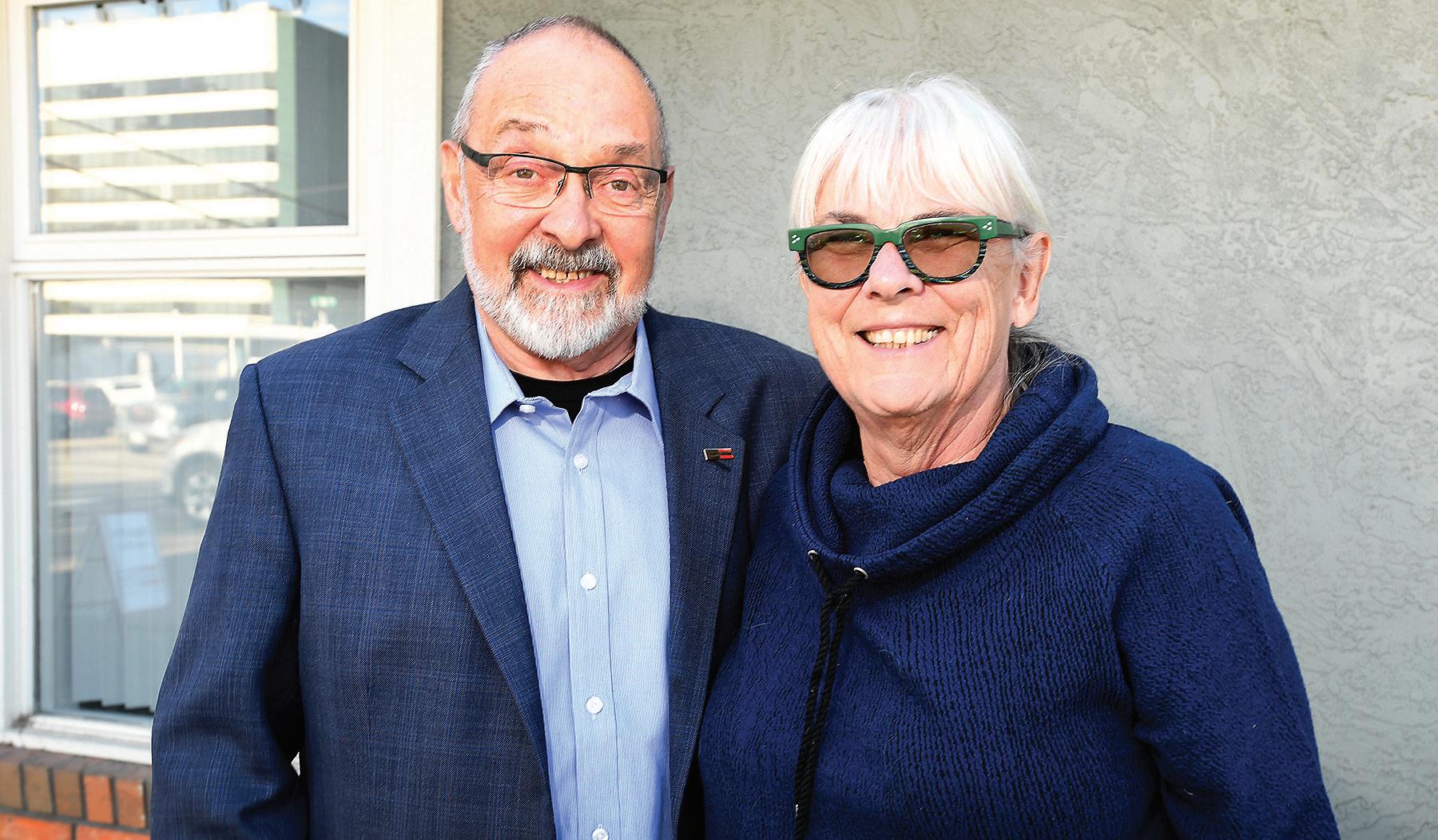
George Weinand was born in 1939 and raised on a farm near the small northern town of Tisdale, Sask. He is a 40-year resident of the City of Prince George and is a wellknown and respected commercial real estate agent with Royal LePage.
Prior to his real estate career. George worked for the Bank of Nova Scotia. He was with the Bank of Nova Scotia for 17 years and during that time he was transferred and moved 17 times until he ended up in Calgary.
The Bank of B.C. offered him the opportunity to spearhead the opening of their newest branch in Prince George so he quit the Bank of Nova Scotia in 1977 and moved to Prince George. He was an avid outdoorsman so he was excited about the move.
George successfully opened the new branch in April of 1978; business was exceptionally good and it wasn’t long until the Prince George branch had more resident shareholders than any other branch in BC.
George said, “We had many resident shareholders because the local businesses of the day were well managed, forward thinking and aggressive; as a result, the branch was very successful and well capitalized.
“Prince George prospered and the bank grew until 1981 when the economy was impacted by rising interest rates. The federal
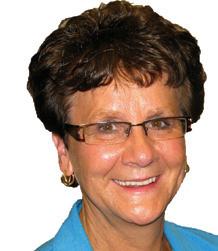
government of the day introduced the Anti-Inflation Board. The idea was to control wages, price increases and to cut inflation by raising interest rates. The policy of using interest rates to cut inflation culminated in 1981 when the bank rate rose above 21 per cent and the prime lending rate was 22.75 per cent.
“The high interest rates eventually caused the failure of the real estate industry and destroyed a generation of entrepreneurs. It took the real estate industry 10 years to recover from the recession but they eventually got back on their feet.
“The Northland Bank in Calgary and the Canadian Commercial Bank in Edmonton went into receivership and the Bank of B.C. eventually sold out to HSBC. I worked for the receiver for three years and then I chose real estate as my new career.
“When I first became a realtor, I worked with Vern Gatzke and later Dirk Lodell at the Sutton Group and, after 18 years, I joined Remax with Bill Lynch. Two years ago, when Rod McLeod offered me an opportunity to work with him and the other great people at Royal Lepage I jumped at the opportunity.”

George married long-time
friend Sandra Rees in 1995.
Sandra said, “I born in Wales.
My mother, Glenys, was a Woman’s Air Force driver who had fallen in love with and married Canadian Flyer RCAF Wing Commander, Doug Hagerman, a Saskatchewan farm boy.”
When the war ended, Sandra and her mother, like thousands of other war brides, came to Canada. They arrived at Pier 21 in 1946 and then took the train across the country.
The young family first settled in Dinsmore, then Saskatoon and eventually moved to Edmonton where Sandra grew up.
After high school Sandra completed a secretarial program at Alberta College and found work with the Alberta government in the personnel office before becoming an assistant to the Minister of Consumer Affairs.
Sandra said, “I moved to Calgary in the early ’70s andfound work as a recruiter for BP Exploration. It was an exciting time when recruiting meant bribing and luring professionals to switch employers and even to immigrate to Canada from other countries.
“When the ’80s downturn in the oil and gas industry in Alberta hit, I enrolled in the University of Calgary and received my BA/Commerce Degree in 1989. Upon graduation I joined the human resources department of the Alberta Central Credit Union.
“I moved to Prince George in 1993 and accepted the position of senior manager in the human resources department with Prince George Saving which is now the Integris Credit Union.
“Our 1995 marriage took place in Taxco De Alarcon, Mexico. Mexican judges are political appointees so the following year, when the government changed, the judge reverted to his previous profession as a
piano player in a bar. We joke that the marriage was only valid during the short time when he was legally a judge.
“I left Integris in 2009, enrolled in the executive coach program with Royal Roads University, earned my executive coaching certificate and worked as an independent coach/HR consultant for the next seven years. Mostly retired I still take on small projects.”
Throughout her career Sandra had been an active participant in the BC Human Resource Management Association (HRMA) and served as an advisor to the provincial board and as chair of the northern chapter. She served for 12 years as a trustee for the B.C. Credit Union’s Benefits and Pension Trust.
In 2011 Sandra and her therapy dog Dixie began their joint volunteer career at Gateway Lodge.
Dixie recently retired from her therapy duties at the age of 10 and after an interesting, challenging and productive career working with Alzheimer patients.
Sandra and George have traveled all over the globe but a recent Canadian trip to Halifax was especially memorable for Sandra. She re-visited Pier 21 which is now an UNESCO site honouring the Canadian immigrant experience.
Pier 21 provided information about the Queen Mary; the refitted troupe ship on which she and her mother had travelled to Canada, as well as many other details of the war bride experience.
Sandra explained, “Taken together, George and I have three sons and a daughter who have given George three grandchildren and two great grandchildren. Son Trevor and daughter Tracey, live in Brooks, Alberta.
“I have two sons; Troy (Bar-
bara) in Terrace and Greg (Jill) who lives alternately in Fernie and Kiawah Island, SC.” She laughed and said, “Since I have no grandchildren of my own George and I had to get married because I needed grandchildren.”
George is a 40-year member of the Prince George Rotary Club and a past treasurer and director for the Prince George Chamber of Commerce.
He is an active participant in the Royal LePage Shelter Foundation. Royal LePage is the only Canadian real estate company with its own charitable foundation which is dedicated exclusively to funding women’s shelters and violence prevention programs.
Since 1998 the Shelter Foundation has raised more that $24 million through national partnerships. Royal LePage agents donate a portion of their commissions to the Shelter Foundation.
George concluded by saying, “I have watched Prince George boom and then suffer and then grow again. The University of Northern BC was exactly what our city needed. The arrival of UNBC prompted the College of New Caledonia to grow and increase its support of our natural resources industry. Both UNBC and CNC brought many new skill sets and a diversity of people to Prince George and there are still many benefits to come in the future.
“Our downtown continues to improve and there is not a city anywhere the same size as Prince George that has as many good quality sporting facilities like we have.
“Over the years I have established excellent long-term relationships with local business people, contractors, developers, investors and financiers. I love what I do and I have no intentions of retiring any time soon.”


Branigan, elementary school teacher, made her choices during the Friends of the Library Society book sale held Saturday at the main branch of the library.the fundraising event is held twice a year.
Christine HINZMANN Citizen staff chinzmann@pgcitizen.ca
Twice a year book lovers take advantage of the Friends of the Library fundraiser to expand their personal collections of the written word.
There was no limit to the amount of books those in attendance could purchase by donation and there was thousands of books to choose from during Saturday’s sale which took place at the main branch of the Prince George Public Library.
On top of row upon row of end-to-end tables were a variety of books. Those agile enough could take a closer look at the books in the boxes on the floor as well but it took some deep knee bends to get there and back.
Visibly weighed down by her reusable bag brimming with elementary-school-age appropriate books, inner-city school teacher Cynthia Branigan’s arms were almost full with choices for herself, too.
With a slightly sheepish smile, Branigan explained that those books in her arms were mostly her guilty pleasure - best sellers and historical fiction by authors she used to like to read in Britain. She lived there years ago with her British husband.
“This is an extremely worthwhile event,” the primary teacher said. “I share it with my students that I come to this event so that their parents might come down. I am one of those teachers whose classroom is packed with books because I want to make sure my students can read every type of book they want.”
In Branigan’s bag was books about owls, bats and science, among many other topics.
“I’m always looking for something new and something different I can use in my teaching,” Branigan said.
Margaret Johnston, president of the Friends of

the Library Society, was sitting at the reception desk that saw people making their donations in return for their new-to-them books, DVDs, videos, and CDs.
Johnston said thousands of books will find their way to new homes and all proceeds from the sale go back into whatever the local library needs.
Some of the funds raised in the past have gone to things like the digitization of the Prince George Citizen and more will be directed toward the digitization of the Prince George Free Press. Another project saw the Friends of the Library donating to the Aquascape, a giant fish tank that can be viewed from inside the Keith Gordon Room as well as the children’s section of the library and other funds will go toward the mobile library that provides outreach to those who can’t make it to the either of the two branches of the local library.
Johnston said the Friends of the Library has a 10- foot storage container that was filled from floor to ceiling with donations from the community as well as those items discarded by the library.
A perk of being a member of the Friends of the Library Society is that for the $5 annual membership fee, patrons can attend the preview book sale held the evening before the event to take advantage of the best selection.
“There were 197 people here last night,” Johnston said. There were hundreds more in attendance Saturday.
The 41st annual Studio Fair takes place Friday, Nov. 2 from 10 a.m. to 8 p.m., Saturday, Nov. 3 from 10 a.m. to 6 p.m. and Sunday, Nov. 4 from 10 a.m. to 4 p.m. at the Civic Centre, 808 Canada Games Way.
The annual Studio Fair will be once again be presented by the Prince George and District Community Arts Council.
The public’s doorway to the arts offers unique, original, quality gifts, artwork and cuisine.
Studio Fair is Northern B.C.’s only juried art fair offering guests only the best.
The event is a major fundraiser for the arts council, while providing a high standard of merchandise to visitors at the marketplace.
This distinction has given Studio Fair a reputation for quality and innovative design.
One day pass is $5, children 12 and under are free. For more information visit www.studio2880.com.



Mark NIELSEN Citizen staff mnielsen@pgcitizen.ca
Retired businessman Barry Boehmer says he has $10,000 pledged to start up a buyback program where people would collect needles and bring them to a depot where they would be paid on a piece-rate basis.
It’s an idea Northern Health does not endorse.
Reanne Sanford, the regional nursing lead for harm reduction with Northern Health, raised a number of concerns. They include users simply taking needles from Northern Health and handing them over to the depot for a profit, creating waste. She also questioned the ability of the depot to safely handle large numbers of needles.
But perhaps most important is the worry that users will lose the connection with the people who can help point them in the right direction should they want to find ways to end their habit because they choose to go to the depot rather than Northern Health to drop off their used needles.
She also notes that of the 450,000 needles Northern Health handed out during 2017, 400,000 were returned or nearly 90 per cent. She also

contends many of the remaining 50,000 have been disposed of safely via such things as the sharps containers installed



around the city.
But Boehmer, who hopes to have something up and running before the snow falls, remains skeptical saying he’s heard too many horror stories about needles found behind businesses and in school yards.
“Northern Health, in my opinion, is doing a tremendous job if there is 90 per cent being picked up,” he said. “What we want to do is make sure we work together and, in a positive frame of mind, get the other 10 per cent and get it eradicated.”
Sanford favours so-called “peer-run models” and pointed to a program now up and running in Quesnel as an example.
Since May, a crew of four people described as “vulnerable to homelessness” have been patrolling Quesnel’s streets picking up discarded syringes from around businesses before they open for the day as well as around school grounds.
Known as the Clean Team, they have picked up 1,782 needles as well as 382 bags of garbage and 32 bags of recycling over the past four months.
A previous version of the team that worked on an irregular, on-call basis “picked up thousands,” Clean Team coordinator Jenny McDougall said. “This year, it’s gone down I’d say half at least.”
The venture, which is being run on a pilot program basis, is funded through a partnership between the City of Quesnel Housing and Northern Health. It has a budget of about $30,000, with each of the crew members working eight hours per week for $15 per hour.
The venture has won approval from the community’s mayor, Bob Simpson, who otherwise
has been an outspoken critic of much the federal and provincial government’s strategy to deal with the ongoing opioid crisis, which he has called ineffective.
“I haven’t seen a Facebook post or anything on needles for a long time and we were getting it almost on a daily basis before we put the team in place,” he said.
councilor Brian Skakun questioned why municipalities should be responsible for the cost of cleaning up a problem tied to provincially-funded health authorities.
Key to its success, in Simpson’s view, is that MacDougall also hands out what he called the “harm reduction kits” at the community’s native friendship centre.
“Because of that connection, she is in the face of individuals coming in to make sure that what they will be taking they will be careful about using,” Simpson said.
As for establishing a buyback program, Simpson “wouldn’t do it, wouldn’t touch it with a 10-foot pole.”
Simpson said the idea was given a look when it was first raised by a local financial institution. He came away echoing many of the concerns raised by Northern Health about improper handling of needles.
Perhaps the closest Prince George has to something like

Quesnel’s Clean Team is the Drug and Alcohol Recovery Team (DART). Among its many contracts is one with the city to patrol 7.5 kilometres of trails along the two riverbanks, picking up needles whenever crew members see them.
DART coordinator Glen Grant said he’s willing to expand the effort, noting that in addition to about a dozen workers he has a fleet of seven trucks.
“It would be very simple for us to put a route together... and every morning I could have a crew of people out at six or seven o’clock in the morning where the problem sites are and we could be checking those before anybody ever started (their day),” Grant said.
Mayor Lyn Hall said discarded needles are an issue and not just in the city’s downtown. He also predicted it will be a major topic of discussion when the new council begins budget discussions in January.
But he also stressed the city’s bylaw services department and parks crews have been providing clean up services.
Indeed, it could be said the origin of the latest flare up in the controversy was the success of a sweep two bylaw services officers carried out in the downtown in August.
Rather than simply responding to complaints called into city hall, they went out to various hot spots around downtown and gathered enough needles to fill three five-gallon buckets.
A picture presented during a city council meeting of a pile of the needles they collected drew a strong reaction from Coun. Brian Skakun, who had some harsh words for Northern Health.
Skakun intends to raise the issue at the next Union of British Columbia Municipalities convention, saying Prince George is not the only community stuck with the problem. In Cowichan, more than 1,000 needles were pulled from the local river and shoreline during a recent community cleanup, he noted.
He questioned why municipalities should be responsible for the cost of cleaning up a problem tied to provinciallyfunded health authorities.
“I would think the province could easily tell them, ‘look, if you want all your funding, you’re going to have to live up to certain commitments but it’s definitely something I’ll be working on with the other municipalities because it’s not only a local issue, it’s a provincial issues,” Skakun said.
For the majority of consumers, price and taste have always been the most important deciding factors when choosing a food. In recent years, additional factors have begun to drive consumer preferences. This change has likely been triggered by shifting demographics, a desire for convenience, growing environmental concern and the motivation of the average consumer to know more about the food they’re eating.
In 2015, the Department of Agriculture and Agri-Food Canada summarized trends and opportunities in the food industry and found that foods with innovative ingredients were growing in popularity.
An increasingly health-centric population has likely fueled the drive to develop foods with enhanced nutrition. The food industry is now attempting to attract certain segments of the population with three approaches: biofortification, fortification and supplemented foods.
Biofortification refers to the process of increasing the nutritional value of plants or animals through conventional selective breeding, genetic engineering, or by adjusting animal feed. For example, mushrooms are now being grown using pulsed UV light to boost the vitamin D content.
Fortification is the mandatory addition of vitamins and minerals to select staple foods. Health Canada requires that certain foods be fortified or enriched with nutrients to replace those lost in processing, or to address a public health requirement. For example, vitamin D is added to milk to prevent childhood rickets and folic acid is added to white flour to promote proper fetal development of the brain and spinal cord.
There’s some controversy surrounding mandatory fortification, since some people believe the consumer should be given the choice whether or not to take in the nutrients added to commonly eaten foods.
Supplemented foods are marketed as having added substances, such as vitamins, minerals, amino acids, herbals and bioactive ingredients, with the intent of providing a health benefit beyond the general public health requirements addressed through fortification.
This type of nutritional enhancement is meant to appeal to certain segments of

Kelsey lecKovic
the population. Water with added vitamins would be an example of a supplemented food. Health Canada does not require that bottled water manufacturers add vitamins to their water, but some companies do so in an attempt to appeal to a certain demographic and tout the additional, potential health benefits associated with their product.
The demand for functional foods, a type of supplemented food, has grown at an increasing rate, and is outpacing that of the traditional processed food market.
All foods are functional to a certain extent, whether providing energy or other nutrients essential for life, but a functional food has other components, not considered to be nutrients that can provide positive health benefits.
Health Canada defines functional foods as foods that are enhanced with bioactive (biologically active) ingredients and which have demonstrated health benefits, such as yogurt with probiotics or pasta with added pea fibre.
Canada produces a number of bioactive ingredients used in functional foods including omega-3 and other essential fatty acids from marine and plant sources, fibre from soy and oats, and antioxidants from blueberries, cranberries and Saskatoon berries.
In Canada, more than 750 companies specialize in functional foods and natural health products, accounting for more than $11 billion in revenues in 2011, with current profits likely to be much higher.
Functional food research is an exciting area of food development, with functional foods having the potential to improve the nutritional intake and quality of life for consumers.
Although, at this point, any related research must still successfully establish the bioavailability (the proportion of a substance that is able to have an active effect) of the bioactive ingredients in these enhanced foods.
The addition of these functional ingredients allows food manufacturers to
make health benefit claims.
The consumer can be led to believe that by eating more of that margarine with plant sterols, they’ll lower their cholesterol, or by eating a sugar-laden probiotic yogurt they will drastically improve their digestion, which is not the case.
Bottom line, no single food, no matter how “super,” can take the place of the important combination of nutrients from all major food groups. Functional foods can contribute to a healthy, balanced diet but are often not required. Eggs fortified with omega-3s and margarine with phytosterols can be a part of a healthy diet for most, but the additional cost of these niche-market items may not be worth the potential health benefits, especially when these ingredients can be eaten as part of a balanced diet.
— Kelsey Leckovic is a registered dietitian with Northern Health working in chronic disease management.



One of the special things about having a weekly column is that sometimes (most of the time) you sit down to write only to discover that nothing interesting has happened in the last week and you have no idea what to write.
However, I have made a commitment and I am going to fulfill it, even at the risk of sounding trite or sentimental. Because I have no interest in discussing the elections or the referendum or parent/
Home Again
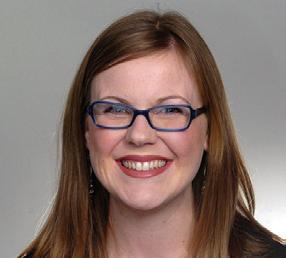
Megan kuklIs
teacher interviews, I am going to instead write about how I write.
Some people in my life have no idea about how the writing process works, in general, and my own writing process, in particular.
They may think that I watch people

in a special sort of “writing” way and observe people in a way that is somehow magical. If only it was magic instead of boring ol’ habit and perseverance. Maybe somewhere in the universe, there exists a magical cloak á la Harry Potter that a person can wear to become a writer of books who never procrastinated.
I would buy that cloak.
The actual process of writing, or, at least, my writing process, is not magical. My week tends to go like this: spend every day leading up to my deadline thinking about what I should write and praying that something funny, interesting or exciting happens.
When, as you may expect, nothing like that happens, I attempt to turn any one of the small joys, irritations or wishes into a story that I hope people would enjoy reading.
When it is “writing time,” I make myself a cup of tea and wrap myself in a cozy blanket, escaping into my beautifully decorated writing/reading/dreaming room that overlooks an Englishcountryside pond where mother ducks perpetually swim with little ducklings trailing behind them.
I open a blank document on my new laptop that weighs less than two pounds and breathe in the thoughts and breathe out words that come pouring out of my furiously-typing fingers.
Just kidding.
There is no dedicated “writing time” and my laptop is old, heavy and serviceable.
I do not have a proper desk and likely wouldn’t know what to do with one if I had it.
I write on the couch, on the kitchen table and lying in bed. Sometimes I write in a coffee shop but if I am in public, I don’t use a laptop because my laptop weighs far more than ten pounds. There is only my messy, busy life and pockets of time that are always uninterrupted and in between making lunches, cleaning up,

helping with homework, laundry, working and yearning for a nap, sometimes, I type out a little story that I hope people enjoy.
If people don’t enjoy reading my stories, I hope, at the very least, that it caused a momentary diversion from world events, politics and endless talking heads on television, radio (and even in print) about the legalization of cannabis in Canada. Enough already. Pot is legal now and it affects my life not at all. I would much rather buy a good night’s sleep than a joint but maybe that’s just me (I suspect it is not just me).
When I write, there is no magic. Sometimes there is tea and rarely are there ducks. What I do have is a great family, a fantastic community and just enough ego to think that people want to read the things I write. Maybe it is magic. Maybe it is the ducks. Maybe it is somewhere in between.

recently I’ve been on a mission to both find and create more kindness in my world, if only because the news headlines – even personal encounters –are too frequently mean and mean-spirited. I’m thinking of teenage and grown-up bullies, the use of slurs and other hateful language. I’m thinking of the driver who rushed into a parking spot I was backing into – and then flipped me the bird. Thanks, guy.
But life’s not all about sourpusses and sour grapes. Not long ago, I was waiting in a long line at my favorite bakery, which makes amazing scones. The delicious pile in the glass case dwindled quickly as those in the line ahead of me snapped them up, until there was just one perfect beauty remaining – and one woman ahead of me. To my everlasting joy, she chose a croissant, so when I got to the counter I pointed to the last scone and declared, “I’ll take that.” No sooner had I spoken than the fellow behind me cried out: “Hey, that’s my scone! I’ve been waiting in line for 20 minutes!” Which he had been – behind me.
I surprised both of us when I didn’t respond with, “Sorry, it’s mine!” Instead, I countered: “Would you like half?” After a moment of shocked silence, he accepted my offer and one-upped my spontaneous act of generosity. “Why don’t I buy another pastry and we can share both?”
We then sat down on a nearby bench to break bread. While it turned out we had almost nothing in common – from our jobs, ages, political views or mari-
Steve Hendrix Citizen news service
Mike Storms was walking among the crowded shelves of the New Jersey Goodwill facility where he works when something yellow and faded caught his eye. He paused and pulled from the thrift-store jumble a framed sheet of newsprint, dense columns of tiny text topped by a small engraving of a dismembered snake.
The Pennsylvania Journal and Weekly Advertiser, it read.
The date? Dec. 28, 1774. It had been sitting there for months, ignored or dismissed as a worthless reproduction. But Storms, a vintage watch collector and self-described “lover of old things,” was intrigued.
If it really was an 18th century newspaper, he loved thinking of the craftsmanship that went into hand setting all that type, the clunky screw press that would have produced it, one inky broadsheet at a time.
And the three holes he saw punched in the center fold made him think the paper had once been bound with other editions, something not likely with a cheap copy.
“I went to my boss and said ‘Look, do you mind if I research this a little more,” Storms said.
The boss said yes and was glad she did. It took Storms only a few minutes of Googling “Unite or Die masthead” to learn that such an edition of the paper, if genuine, could fetch upwards $18,000 on the collector’s market. And it took only few weeks to confirm that Goodwill had indeed lucked into one of only four known existing copies of that day’s edition of the paper, still perfectly readable 244 years after it rolled-or rather, was peeled-off the press.
“The fact that it survived is just amazing” said Storms.
How and when the paper –which is bound on both sides by glass – arrived at a Goodwill collection point in Woodbury, N.J., is unknown.
Storms contacted Timothy Hughes, a rare newspaper dealer in Williamsport, Pa., who has two editions of the same paper for sale, for $15,500 and $18,500 respectively. He was surprised to realize that the Goodwill was on to something similar.
“We get a lot of calls about historic newspapers, and I’m usually skeptical,” Hughes said.
“I’ve been dealing newspapers for 42 years, and we’ve probably had five or six pop up with that particular snake engraving. But this was the real thing.”
tal status – we’d shared a moment of connection and a simple kindness. I felt happy and, frankly, wanted more of that feeling.
I probably experienced a “helper’s high,” which is what Melanie Rudd, an assistant professor of marketing at the University of Houston, calls the boost we get from being kind. Much of Rudd’s research into understanding what makes us happy has focused on this aspect of giving, which she calls “impure altruism.” The “act of helping others and seeing others happy... gives us this warm glow,” she says, which benefits us. Seen from this vantage point, “it’s hard to do something truly altruistic because we always feel good about it ourselves after we’ve performed the act of kindness,” she says. Not surprisingly, she told me, we want more of that feeling, which comes from behaving in a kind or generous manner. Even people who spend money on others – rather than themselves – experience greater feelings of happiness.
I’d really never thought that someone else’s good behaviour might rub off on me.
Then I recalled recently waiting to buy a coffee a week before my scone-sharing interaction when a customer in front of me, whom I didn’t know and hadn’t even talked to, told the barista that he’d
pay for my beverage. He said he just did that “from time to time. It makes me feel good.” I thanked him profusely, feeling as if I’d been given a gift much more expensive than one that had cost $2.64. I wondered: was my willingness to share a scone some days later somehow related to this gift of coffee?
Possibly. Jamil Zaki, an assistant professor of psychology at Stanford University, has spent years studying how kindness can be transmitted. “We find that people imitate not only the particulars of positive actions, but also the spirit underlying them,” according to his 2016 article in Scientific American. “This implies that... kindness itself is contagious, and that... it can cascade across people, taking on new forms along the way.” For instance, he found that people made larger charitable gifts when they believed others were generous “than when they thought people around them were stingy.” Even more interesting, Zaki learned that when people cannot afford to donate, “an individual’s kindness can nonetheless trigger people to spread positivity in other ways.”
All of which made me think about some of the GoFundMe campaigns I’ve supported: If I see good friends giving about $50 or $100 on Facebook, I’ll probably give that as well; if they are donating less, I give less. Zaki believes this is rooted in our “desire to be part of a group,” which gives us a sense of safety and identity.
I was pondering Zaki’s research when I went to a bookstore event for novelist Tayari Jones, who was discussing her
book, An American Marriage. Jones, who had been introduced by best-selling novelist Lee Smith, started her talk by praising Smith.
Earlier in her career, Jones said, “no one wanted my free book” when she was trying to give it away at a book fair. She had been on the verge of tears when she saw Smith, surrounded by fans, and introduced herself. “Lee was so warm and hugged me,and said: ‘Where’s your book? Where’s your booth?’” Smith invited Jones to her table, where she handed out the younger author’s book as a package with her own. “She just took me in,” Jones said. It was clear the small act of kindness had a profound influence on her.
Afterward, I asked Jones about that moment: Had she ever done someone else a similar kindness? Yes, she replied, and told me how she’d recently reached out to a younger writer whose work she happened to encounter and helped her take some steps to get published.
That is what’s known as the “kindness contagion,” a term used by Stanford’s Zaki, who has written about and studied this phenomenon.
“When we see other people around us acting in generous or kind or empathic ways, we will be more inclined to act that way ourselves,” he says.
So for the next month, I’m going to smile more often at my friends to see whether they return the smile. If Zaki is correct, people are going to try to conform to my behaviour.
Call it my own mini “kindness contagion.” It could be catching.

Among the new items brought back from China to Europe in the 1600s was a unique white material called porcelain.
Translucent and far more elegant than the standard pottery or stoneware plates of Europe, it was a marvel. Rare and sought after by kings and princes, it was worth its weight in gold or even more. Indeed, it was called “white gold.”
Collectors sought after it much like earlier times had seen the Dutch chase rare and exotic tulips. It does seem that mankind will go to great lengths to pursue and pay high prices for an item that for some reason becomes “collectable.” From stamps and coins to Star Wars memorabilia and My Little Pony, people collect all sorts of items. One collector of porcelain able to afford more that most was Augustus II, Elector of Saxony, part of Germany that borders on the north of what would be Czechoslovakia.
The king was an avid collector of the very expensive Chinese porcelain. He dedicated a room in his Dresden Castle to display his collection.
Augustus was also interested in alchemy, the making of gold from base metals. An idea long now discarded, alchemy was then a leading science with many royal patrons. The patrons were wary that a successful find by an alchemist would see the alchemist flee the patron and setup on his own or share the secret with another ruler. To prevent this, the well-paid alchemists were often kept locked up in castle labs and very closely watched to insure that the patron would reap the rewards of the discovery. The alchemists became birds in gilded cages.
The Elector of Saxony gave
willow arune
Ehrenfried Walther von Tschirnhaus, a philosopher of some note, the task of finding the secret of porcelain. Tschirnhaus took under his wing a young man who had boasted that he was close to solving the mystery of alchemy, a certain Johann Friedrich Böttger. The Elector and Tschirnhaus provided a lab, a place to live, and all the needs of this young man, all under strict 24/7 watch.
When months passed, the young man chaffed under the strict rules and limited freedom and unsuccessfully tried to escape. He was soon caught and returned to his cage.
As more months went by, it became obvious to the king that the young man was no further to solving the mystery than he had been at the start. Rather than dismiss him, the king gave Tschirnhaus and Böttger a new task.
They would no longer search for the secret of turning base metal into gold. The new task was to develop a way to make porcelain as fine as the imported Chinese porcelain. If the Chinese could do it there was no reason why Germans could not produce the same product, even better and more suited to European tastes.
It soon became apparent that two things were critical. The first was the clay from which an object could be made. The second was the firing of the clay – the temperature and length of time the object had to stay in the kiln. Lacking modern tools of analysis, both of these could only be done by trial and error. A new gilded cage in a new castle, new guards, and new equipment would keep the young man on track. In another
escape attempt he successfully got over the border to another country. Even so, the soldiers of Augustus found him and returned him to Dresden.
From far and wide, samples of European clay were delivered to the lab in Meissen and fired for different times and temperatures. After years, Tschirnhaus was successful in making a similar product but it was red in colour. Close, but not quite…
Tschirnhaus was finally successful using clay obtained from the Colditz area. A short time later, he died.
Not deterred, Böttger broke into Tschirnhaus’ home and obtained notes giving the type of clay and firing process. After trying things out, he notified the king of the successful outcome and claimed credit.
A factory funded by the king was built in Meissen in 1710 with Böttger in charge. Meissen Porcelain was born.
The king enjoyed the money from the sale of this new product to royal and noble houses throughout Europe and, being an avid collector, he took many of the best pieces to add to his collection. Being king and all, he did not pay for the items he took to sell or for sale to other rulers.
In a short few decades France, Britain, and Italy were able to duplicate the product. By then, the Meissen factory had failed mostly due to the many unpaid items the king had taken for his collection or for sale. Embroiled in political unrest at home and threatened by other states, Augustus lost his throne.
When Meissen was occupied by Prussia during the Seven Years War the factory was reestablished. By the 1830s, the factory was owned by the State of Saxony.
Centuries later, after the Second World War had ended, Meissen found itself in the Soviet zone of Germany. Much of


the equipment of the factory was taken by the Soviets but enough remained for small production. With the fall of the Soviet regime, the factory was returned to the German State of Saxony. Meissen Porcelain remains very expensive and collectible to this day. The real Meissen (save for very early examples) bears a maker’s mark of crossed swords on its base but forgeries abound.
Prices can range to well over $500,000 for older larger pieces. Yet one can start a small collection for under $100. Some traditional styles – the monkey orchestra, for example – continue in production with older (1700s) individual pieces fetching over $5,000 and recently make authentic reproductions by Meissen for one fifth of that or even less. Copies can go for much less. There are eBay ads that use phrases like “Meissenlike” or ”Vintage”, often with the name of another maker.
And forgeries are often seen of the more expensive items, some from the infamous forgery Chinese city of Suzhou. These may
or may not bear maker’s marks that differ from the crossed words. Sorting through all this takes a real expert and even they have been proven wrong on occasion.
Rare is the person who never collects anything. Collecting is a very popular hobby, from the traditional stamps and coins to the expensive cars of Jay Leno and Clive Cussler, the paintings of well known artists, to inexpensive or free bottle caps, matchbooks, napkins, postcards, and rocks.
I recall reading of one fellow who collected oil rags!
On not infrequent occasions, these collections outgrow the homes of the collector, bordering on hoarding.
Collections of cookbooks numbering in the thousands have been donated to many universities. Another book collector I knew was told she had to divest of at least half of her books or her house would collapse. As an ardent collector myself, I understand this malady all too well.


There is no denying that advanced technology vehicles, including electric vehicles (EVs) are the wave of the future but they are also an important factor today, as each of us consider what we can do on a personal level for the environment. Individuals and organizations have varied ideas and opinions about how best to increase the adoption rate of electric vehicles in this province – and B.C.’s New Car Dealers Association (NCDA) shares the desire to encourage greater EV adoption as quickly as possible.
Ideally, advanced technology vehicles such as electrics would be a solution for every individual and family, but that simply isn’t the reality in British Columbia at this time.
B.C. is a resource-based province in which geography and weather in some regions mean an electric vehicle is simply not a viable option for every family or business. In the Interior and North in particular, a robust charging network is required before we are going to see greater EV adoption. In a province in which affordability is an issue, the cost of newer model EVs is not necessarily within the reach of every individual or family. Furthermore, electric vehicles are merely one route to reducing greenhouse gases – at this point in time. Newer model gasoline powered vehicles also play an important role in reductions, as manufacturers unveil new internal combustion models that are much more fuel efficient with each passing year.
B.C. currently leads the country in EV adoption and in the past three and half years, the CEVforBC Program has approved more than 8,400 incentives for clean energy vehicle purchases for BC residents and businesses. Our Associa-

tion has created competition between dealerships across the province to determine who can reach the highest level of sales of clean energy vehicles across all brands. However, we can all agree more needs to be done to move as many consumers to electric vehicles as possible.
Some would suggest that auto manufacturers should be forced to sell an arbitrary minimum number of electric vehicles in our market as one solution, but we believe such an approach would be counter-productive and not possible. Even with ambitious increases in EV purchases by B.C. consumers, the only way to meet regulated quotas would be to restrict the sale of new non-EV vehicles to the province in order avoid penalties. As a result, many British Columbians would be prevented from buying a vehicle that meets their family’s needs or that of their business.
It would also mean additional costs to manufacturers who would have no choice but to add those costs across all their new vehicle lineups.
New Car Dealers advocate an approach through which members continue to educate consumers, there is ongoing planning and investment in infrastructure to support greater electric vehicle usage and opportunities, while maintaining vehicle point of sale purchase incentives – so the realities that are obstacles today, aren’t obstacles in the future.
Blair Qualey is president and CEO of the New Car Dealers Association of B.C. bqualey@newcardealers.ca.


